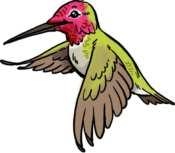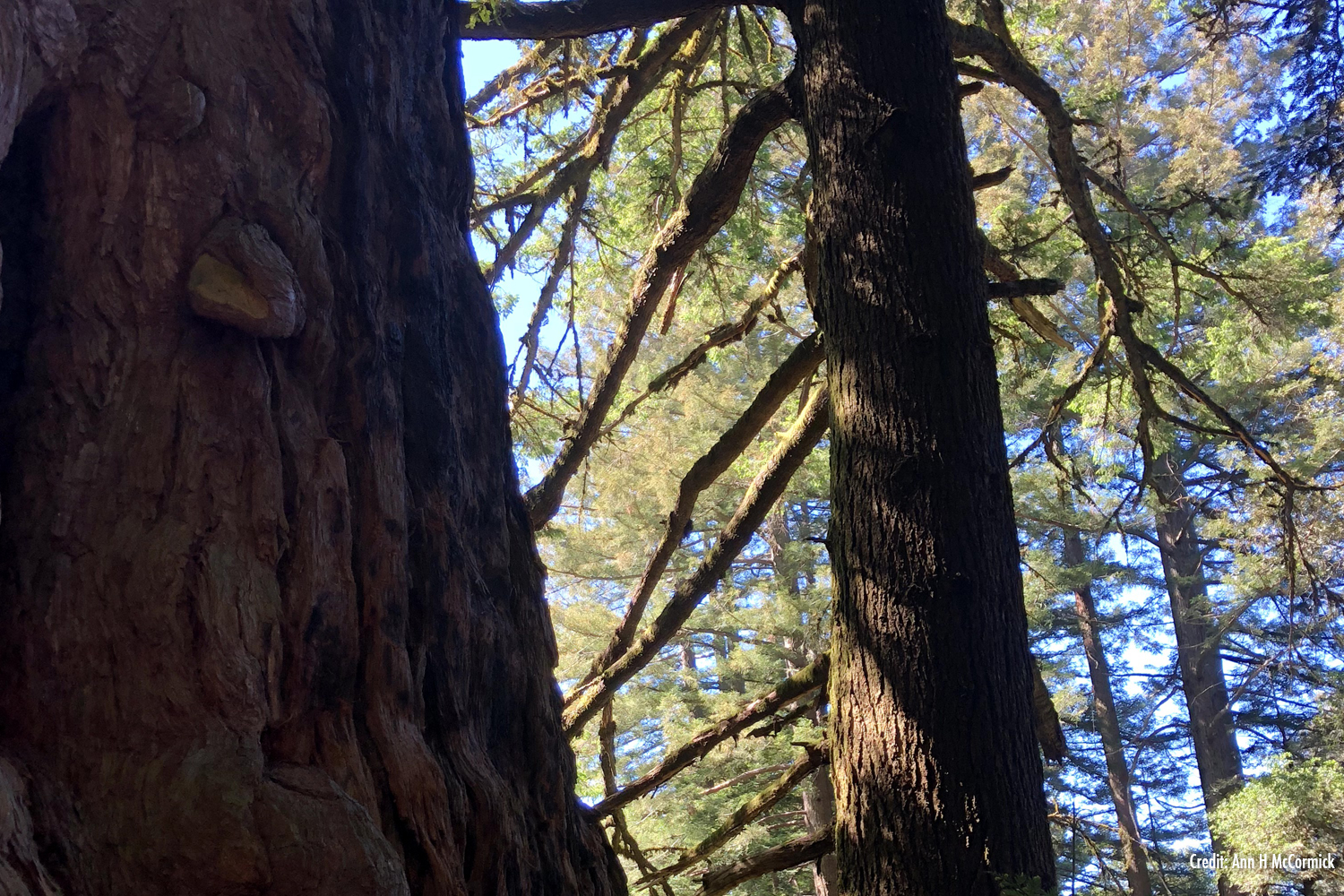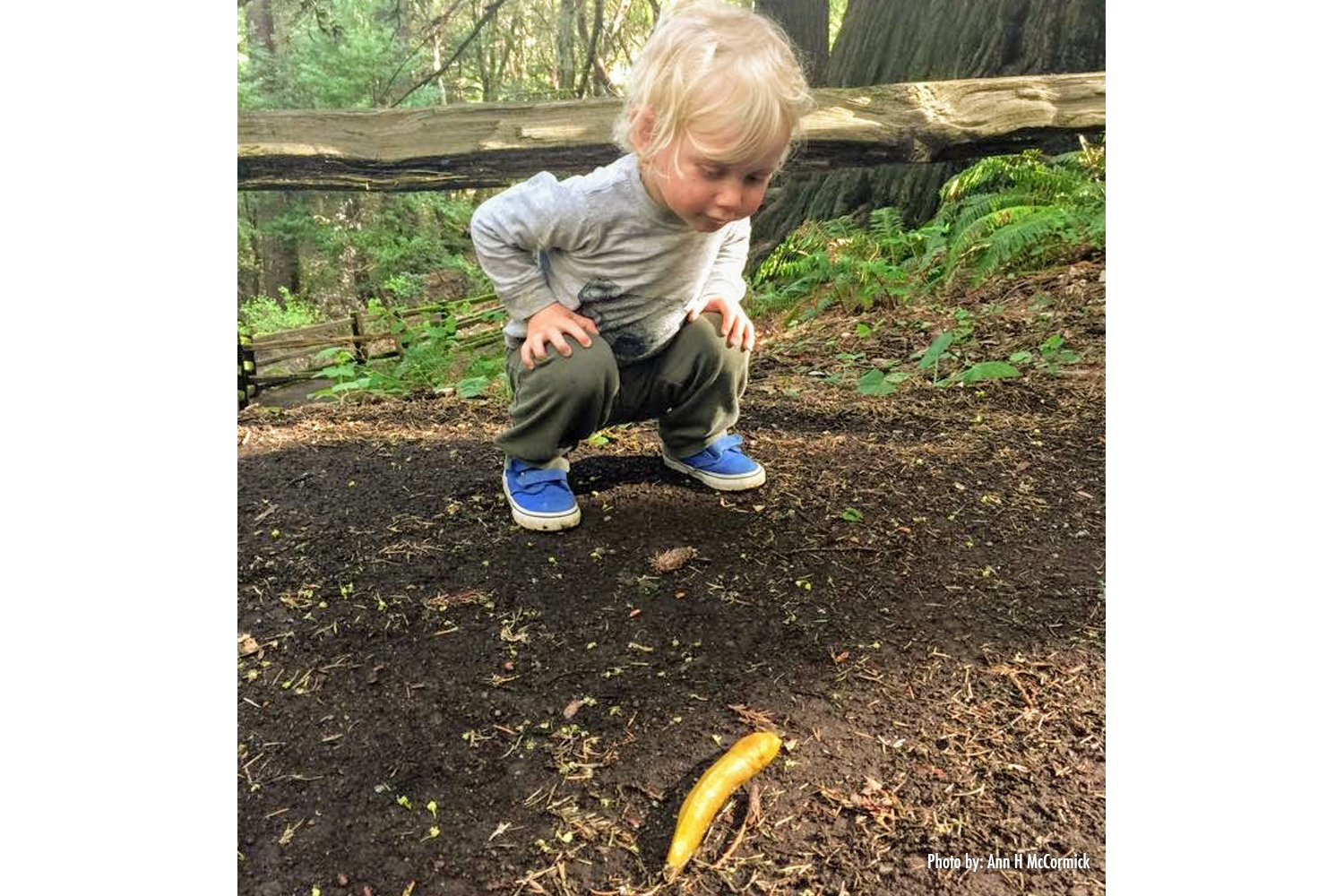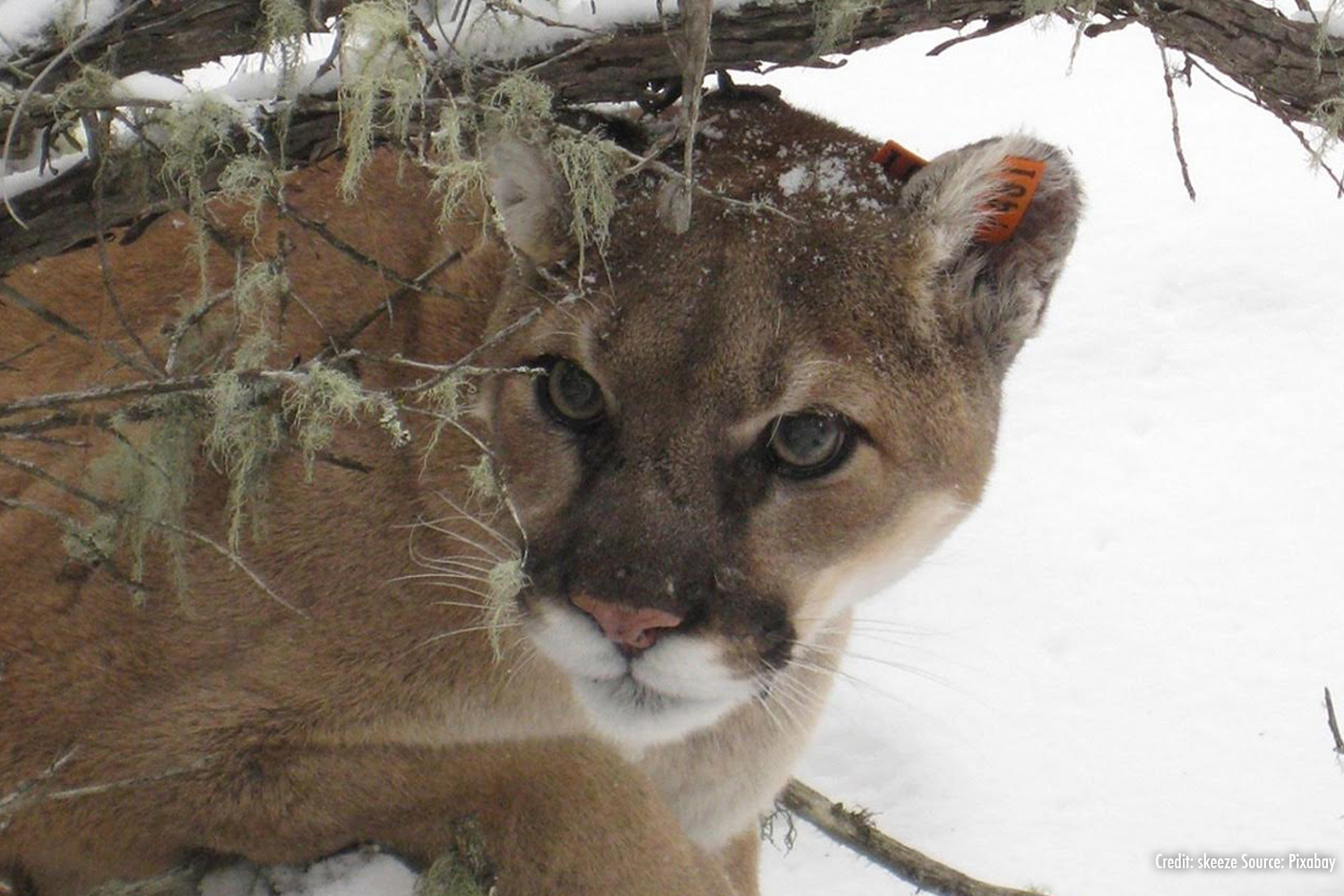Crown
-
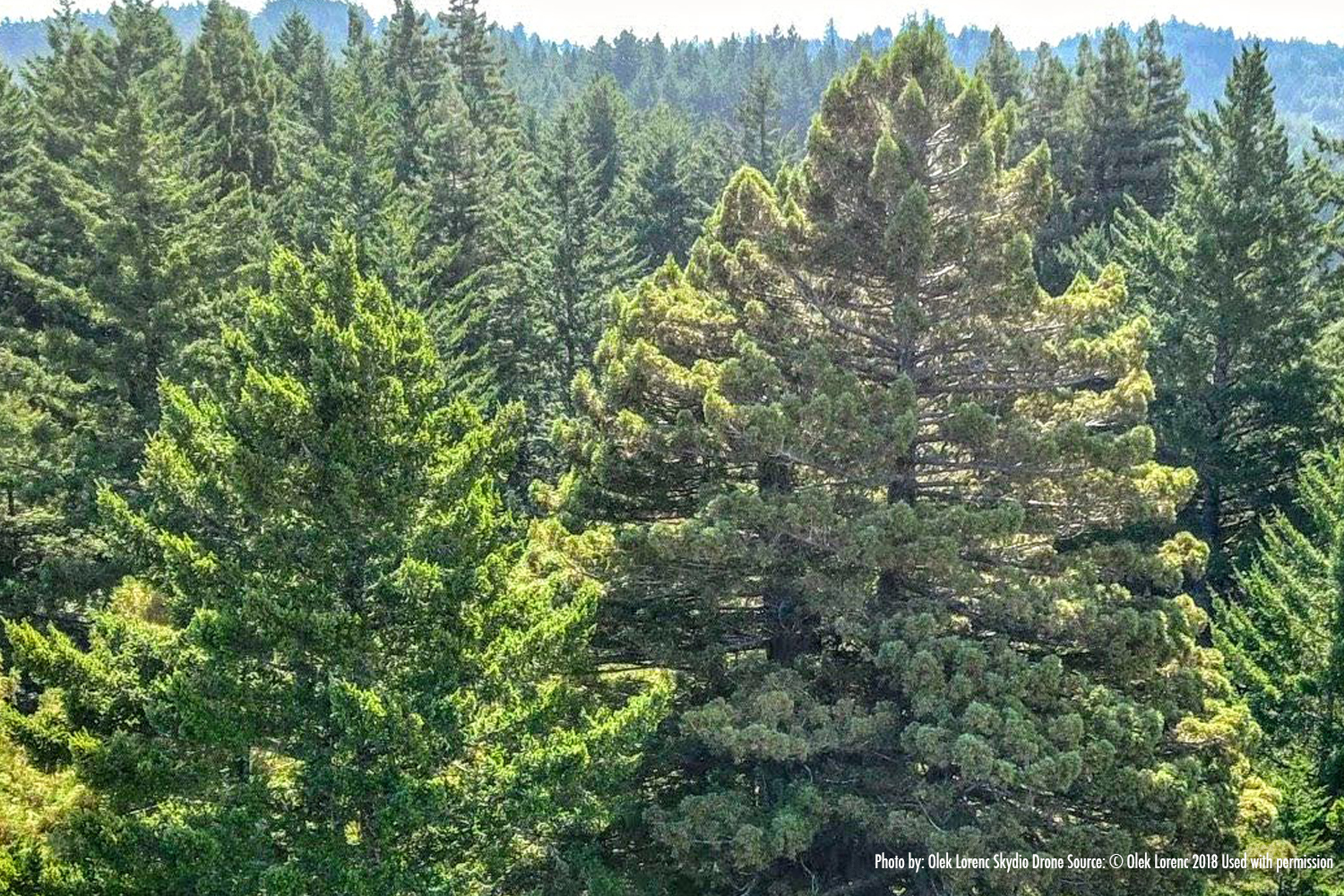
Methuselah & Douglas Fir
Can you see the Methuselah Tree, and the Douglas Fir Tree? How are they different? -
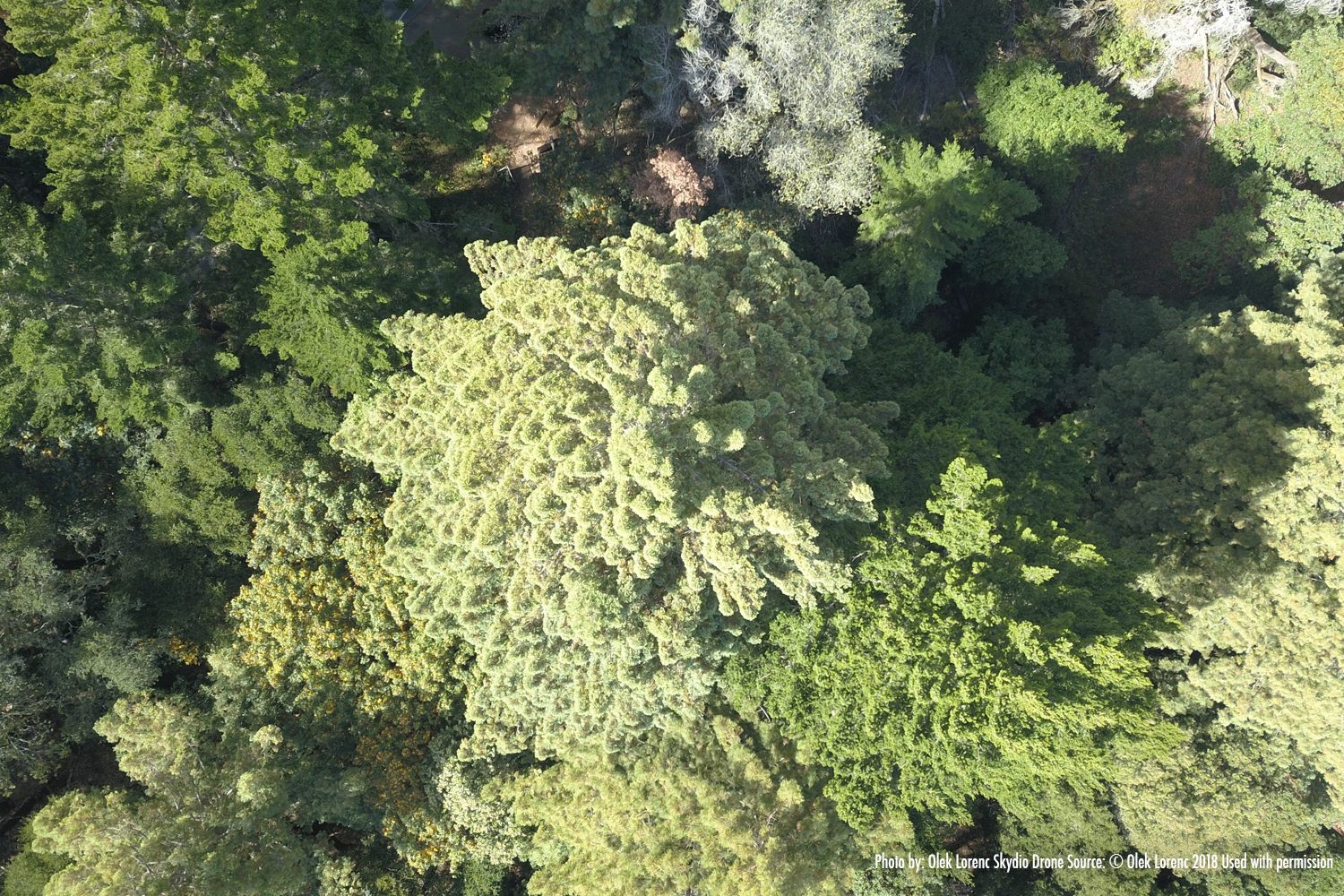
Methuselah’s Crown
About 65 years ago, the top third of the Methuselah Tree broke off, and the Big Old Tree grew a fresh, new crown. This view is from a drone flying over the crown. When you visit Methuselah you see the older branches; many have died. Are you surprised to see that the crown is so new looking? -
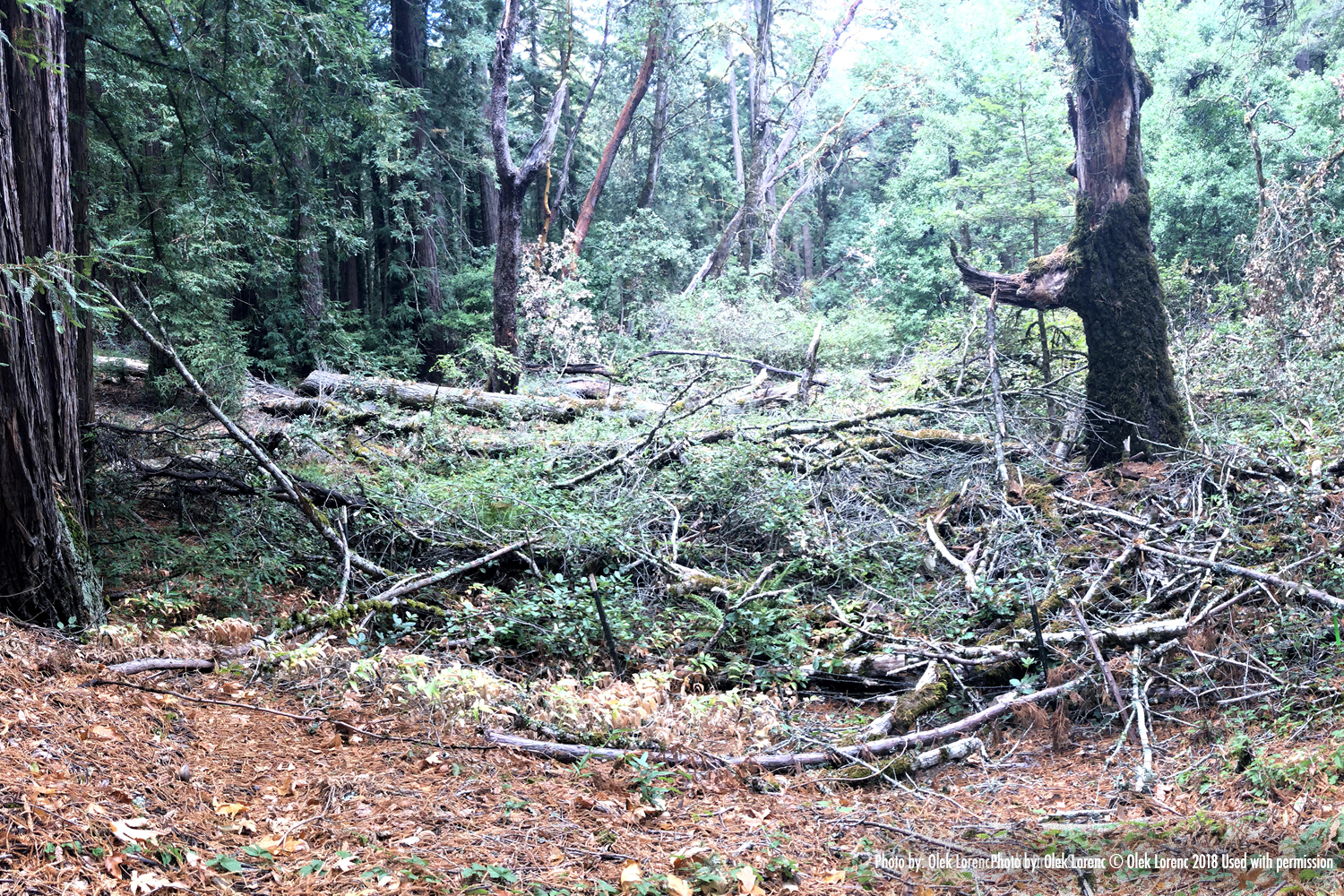
The Crown Fell Down
The Cal Water Service owns the Methuselah Tree and graciously lets us visit. Staff of Cal Water volunteer to take care of Methuselah. Cal Water told us that the crown of Methuselah that broke off in 1954 is on the ground below the tree. Can you see it? -

Red-tailed Hawk Flying
In days when the Ohlone were the only people who lived near the Big Old Tree for over 1,000 years, there were millions of birds. When they were startled by Spanish explorer’s gunfire, their wings made a thunderous noise as they rose up. Can you see the red tail on this hawk? What other birds filled the air over Methuselah in days before Europeans arrived? -
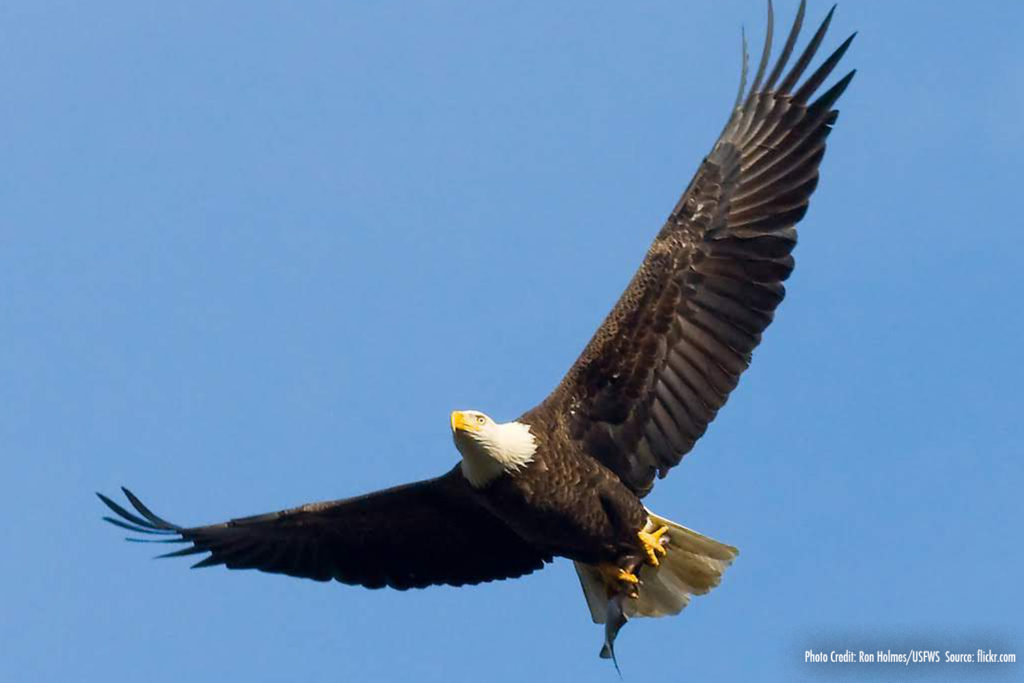
Bald Eagle Soaring
The Emblem of America for over 200 years, the Bald Eagle is a sea predator. It’s likely this majestic bird flies over the crown of the Methuselah Tree today. Do you think you could see one? -
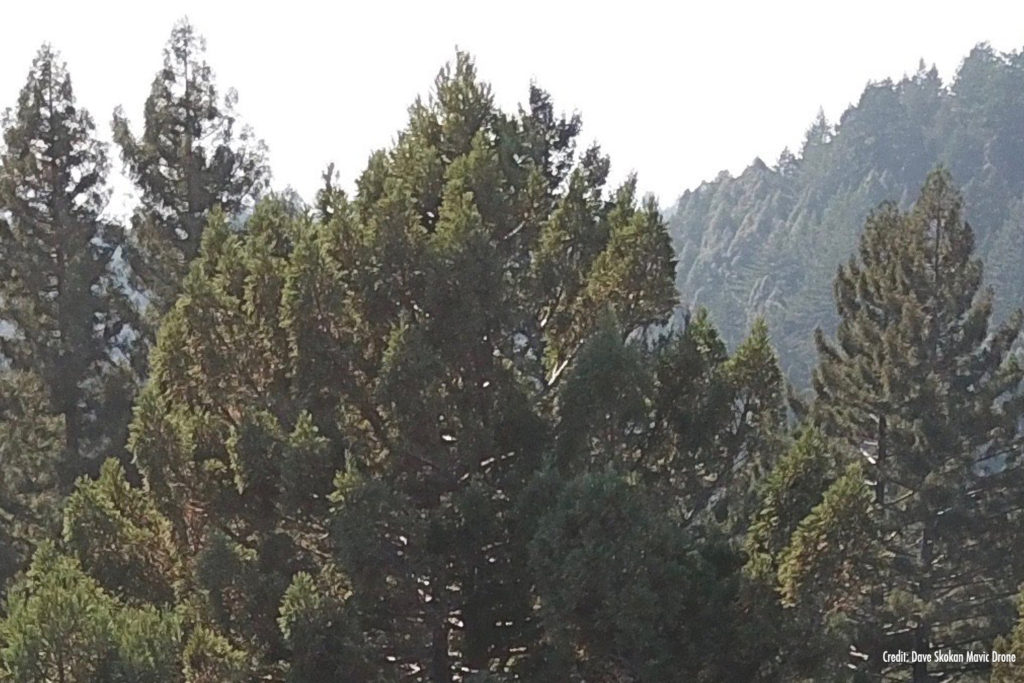
Crown Branching Out
Can you see where the new part of the Big Old Tree spread out to form a new crown? -
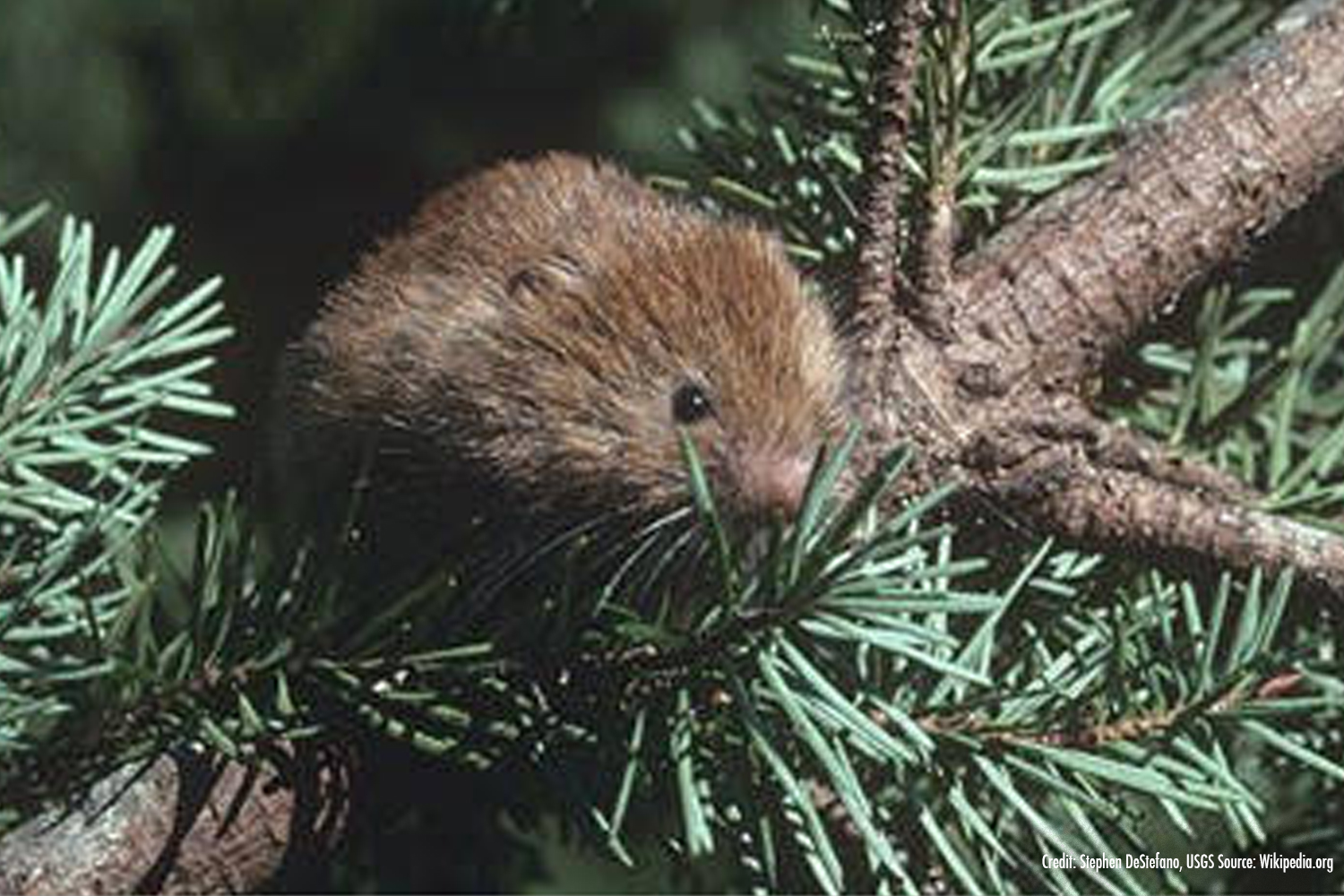
Tree Voles
Tree Voles live high in the crowns of old redwoods, where thick dirt and moss form on limbs so a whole ecosystem can thrive there. When the Big Old Tree was part of an old growth forest,Tree Voles probably lived in the tree’s ancient crown. But now Methuselah has a new crown, under 100 years old. Do you think Methuselah has any Tree Voles today? -

Coastal Giant Salamander
Coastal Giant Salamander In old growth forests, giant salamanders live on the dirt and moss formed high on branches after thousands of years. Have you ever seen a salamander at Methuselah? Why?
Branches
-
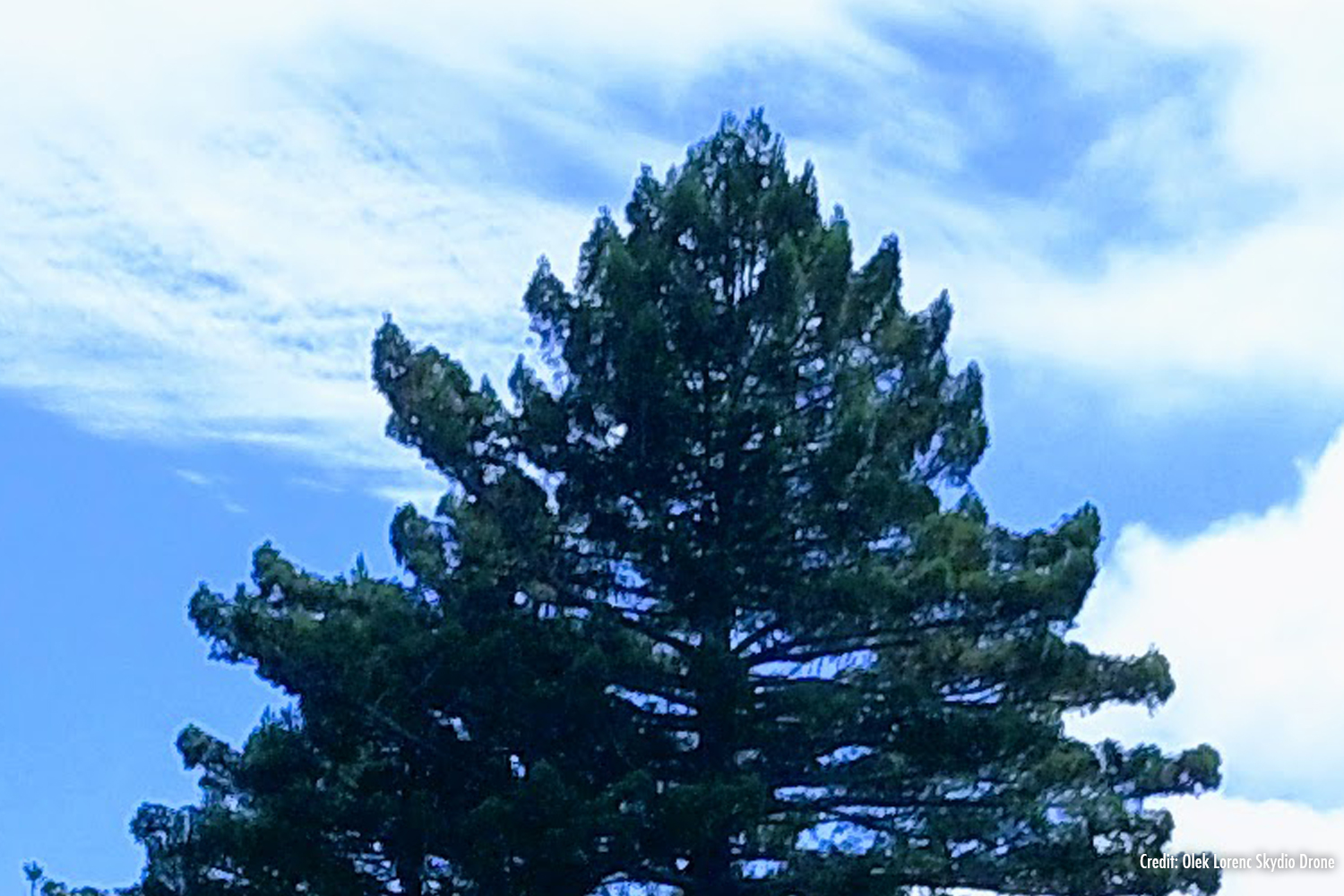
Upper Branches
How old do these branches look? Actually the new top branches started growing about 65 years ago, after the top 88 feet of the tree broke off. Can you see where the old trunk ends and the new trunk spreads several ways? -

Spanish Moss & Monarchs
Monarch Butterflies gather on the coastal trees near Methuselah. These butterflies gathered on Spanish Moss that fell from a large tree, and at first were caught under the moss. The photographer freed them. Can you tell why this is not moss from the Methuselah Tree? -

Great Horned Owl
Great Horned Owls have enormous eyes. What do you think the owls need these big eyes to see in old growth redwoods? Have you ever heard an owl hooting at the Methuselah Tree? Do you think they might have made their home in the Big Old Tree’s branches long ago? -
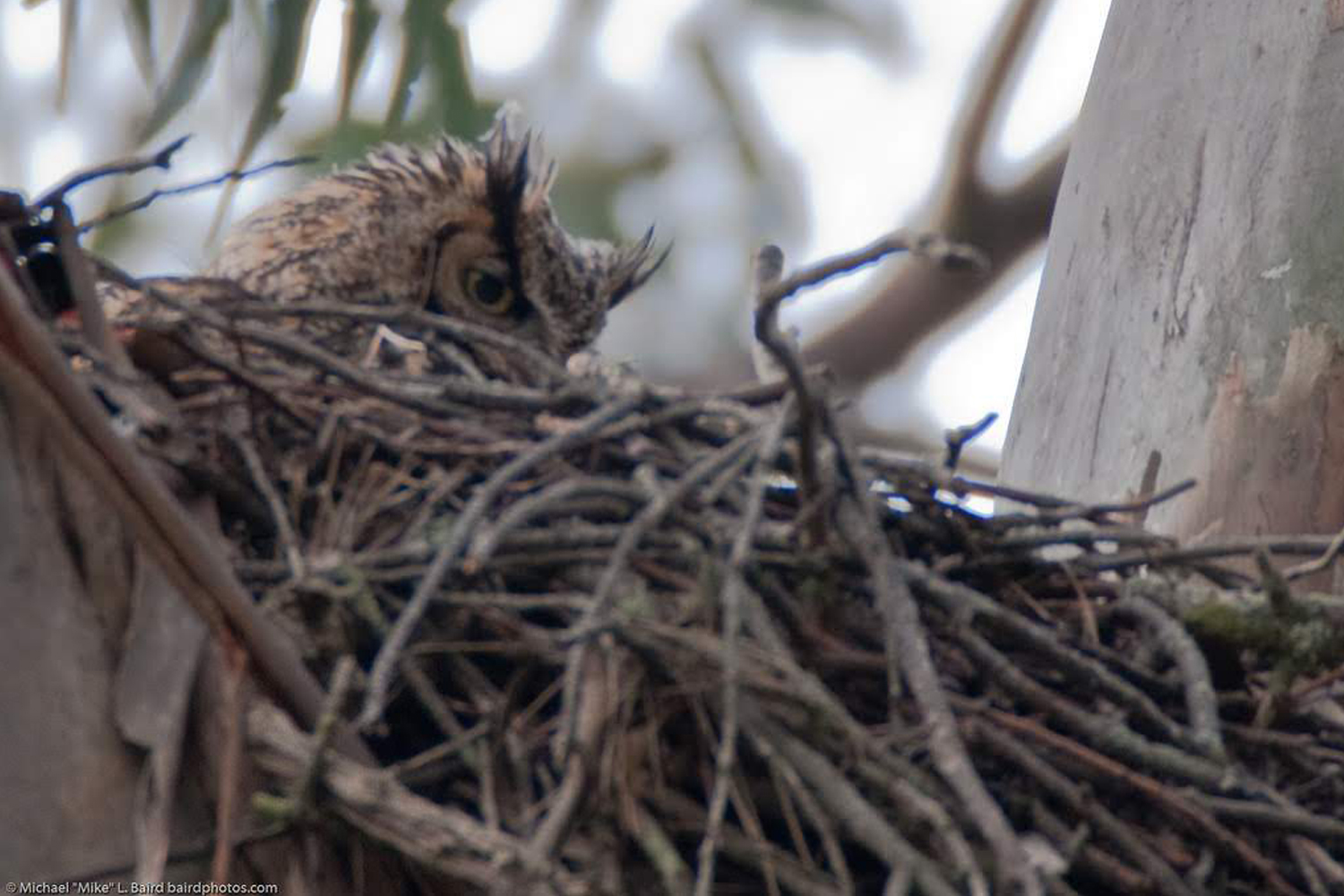
Owl Nest
Owls build big nests out of sticks. Can you see the owl peeking over the next? -
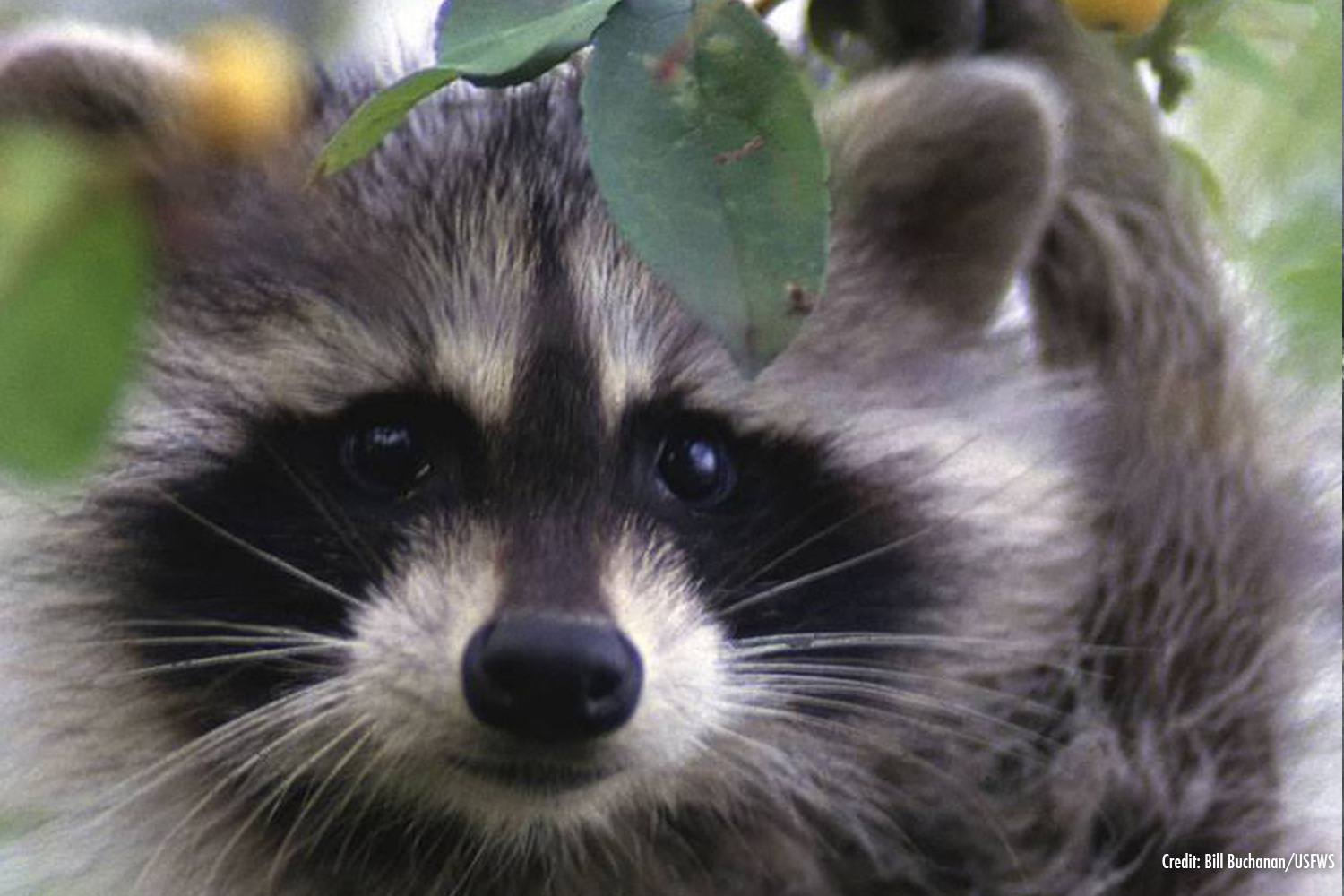
Young Raccoon
Raccoons are another animal that enjoys scampering around second growth redwoods and Douglas Fir Trees. Do you think they could use their sharp claws to climb the burly trunk of Methuselah to reach the branches? -
Crown Branching Out
Climbing down the stairs beside Methuselah, you see the big Douglas Fir whose branches reach out and touch to big old tree. It looks like they are friends, and indeed, the older tree sends water and nutrients to younger trees growing nearby, connecting through their mushroom roots, or mycelium. Methuselah stood all alone when the old growth forest was cut; she needed the protection of nearby trees. Now she has those. -
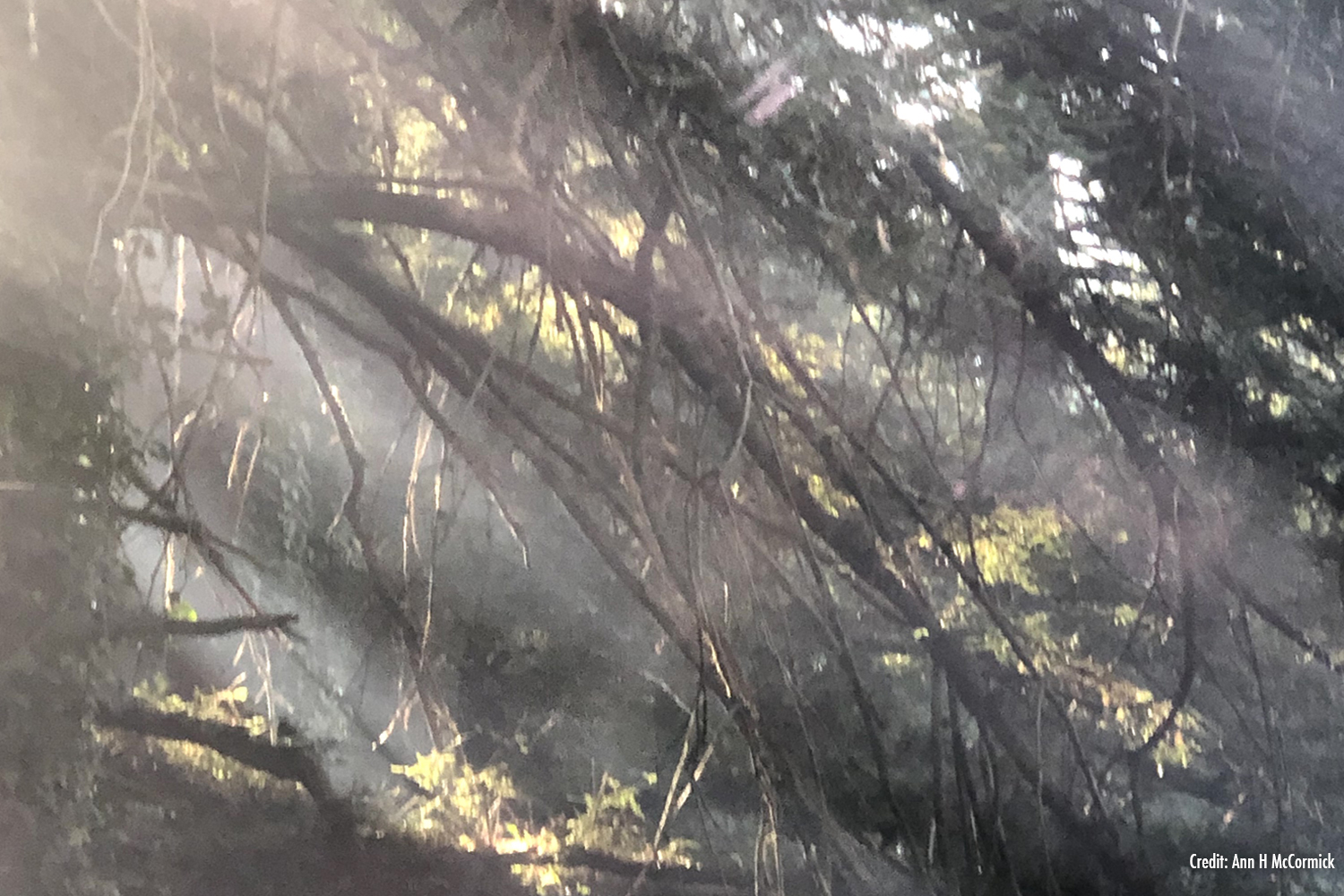
Smokey Branches
Light beams from the sun shine through the smoke from a recent fire. How many fires do you think have burned Methuselah? -
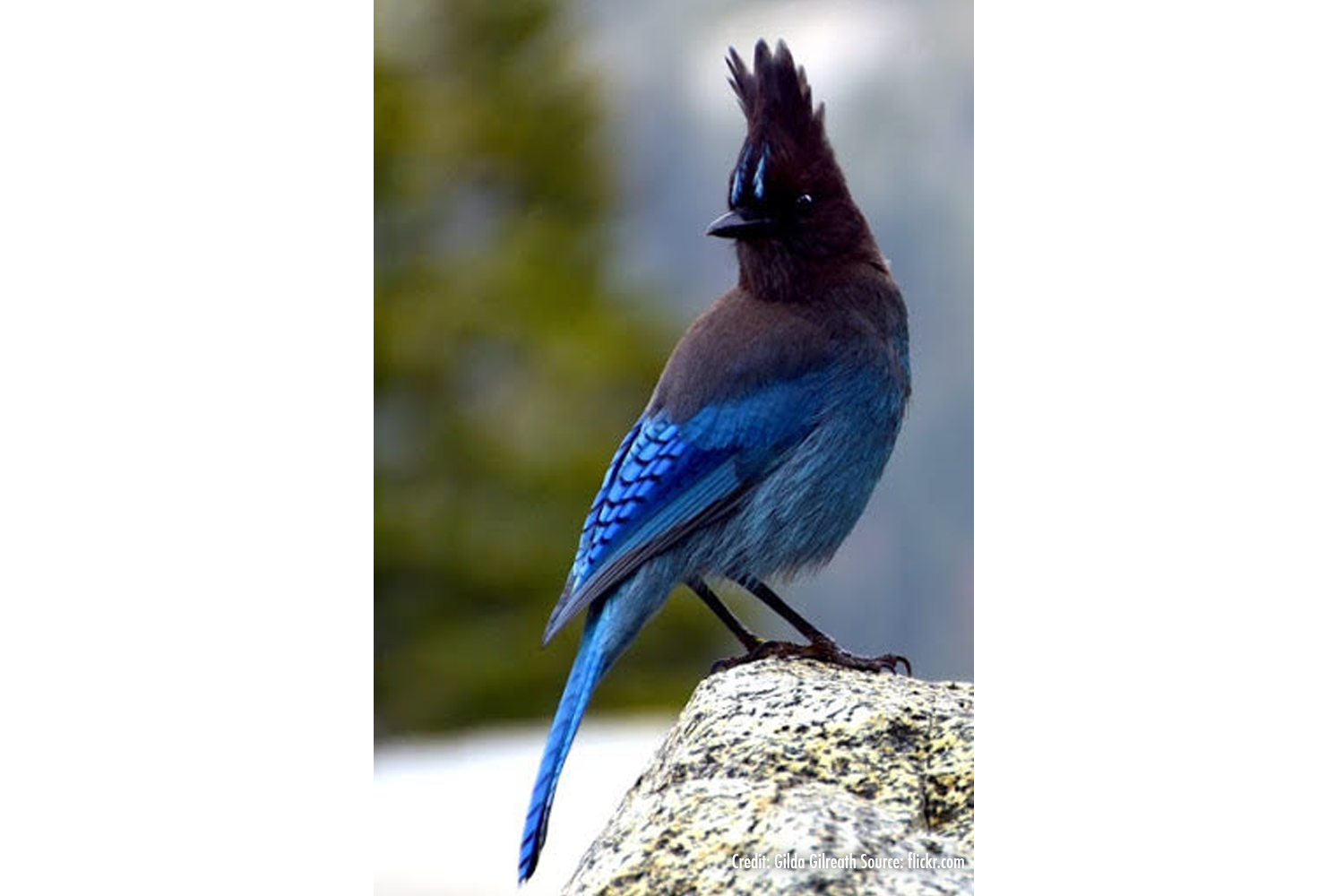
Stellar Jay
Stellar Jays are smart and hardy, and live 12 to 15 years. They fly near people in a flash of blue and will happily steal human food. They threaten other bird species by attacking the eggs and chicks. Have you seen these beautiful birds? -
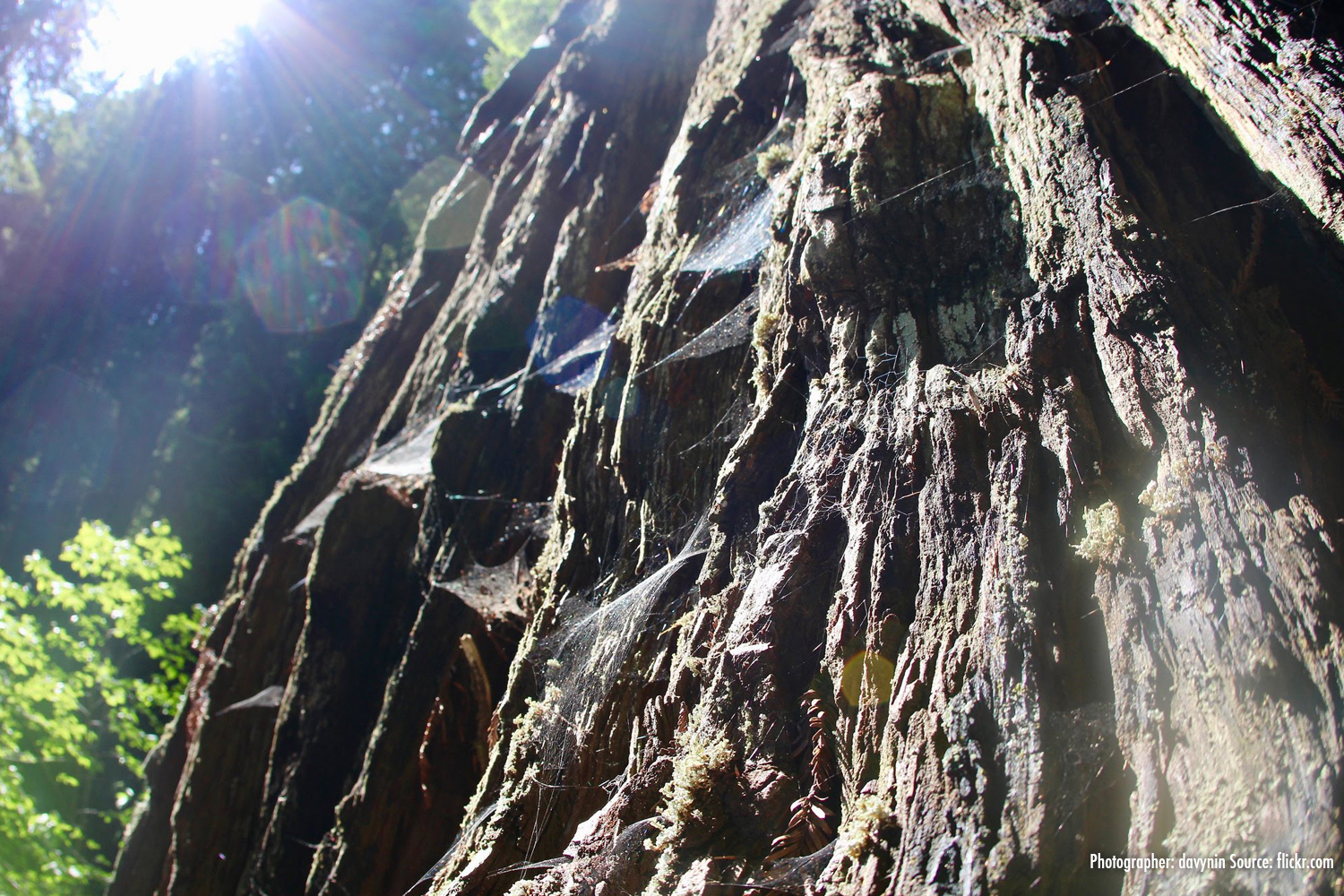
Redwood Spider Web
Living on the trunks of redwood trees are spiders that go back to the time of dinosaurs. Their webs are a mat of tangled webbing rather than a radiating web. You can see webs at the Methuselah Tree from very ancient spiders, wrapping around the tree, shining in the sun.
Trunk
-
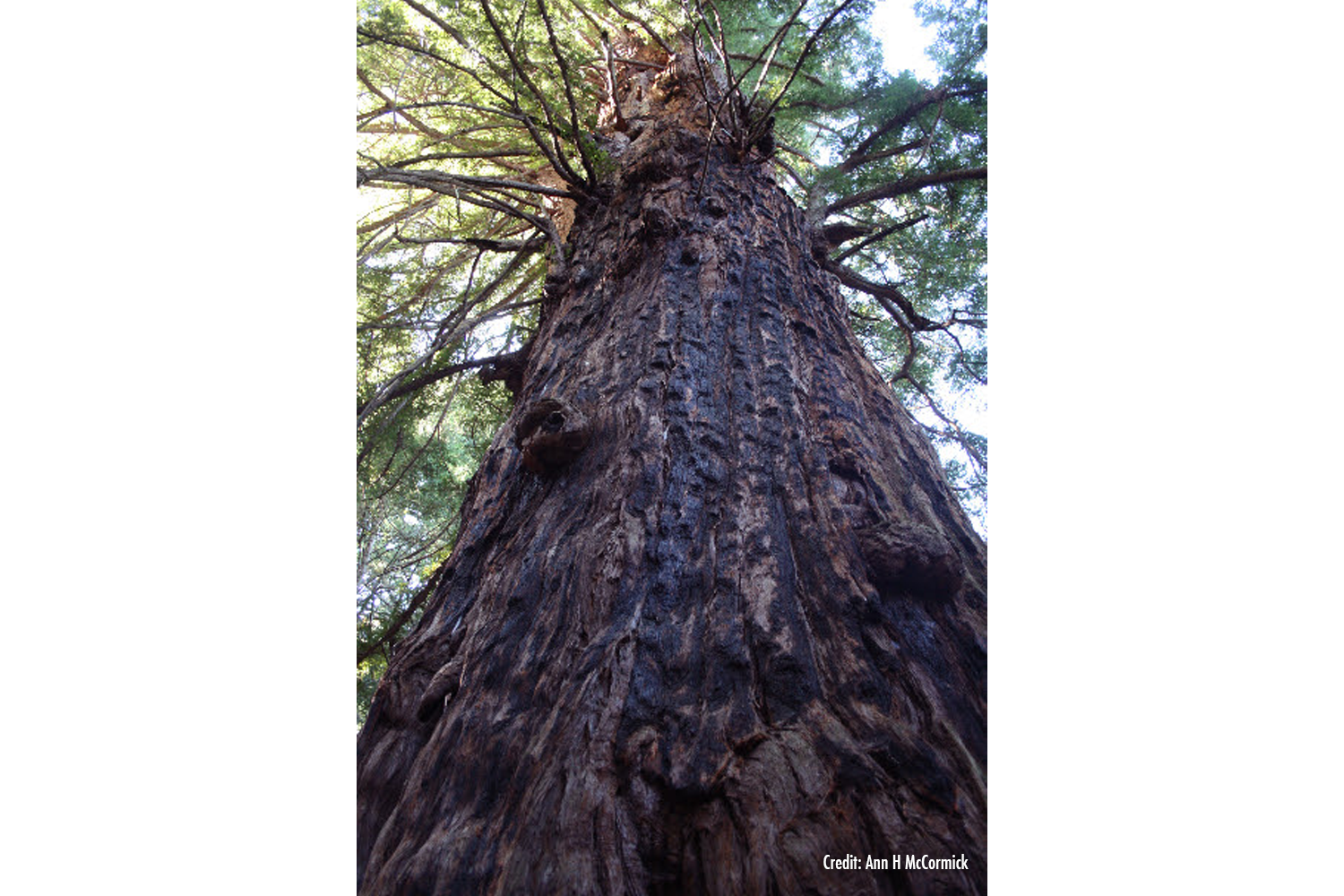
Charred Trunk
Looking at the charred trunk, how high do you think flames rose up Methuselah’s trunk? -
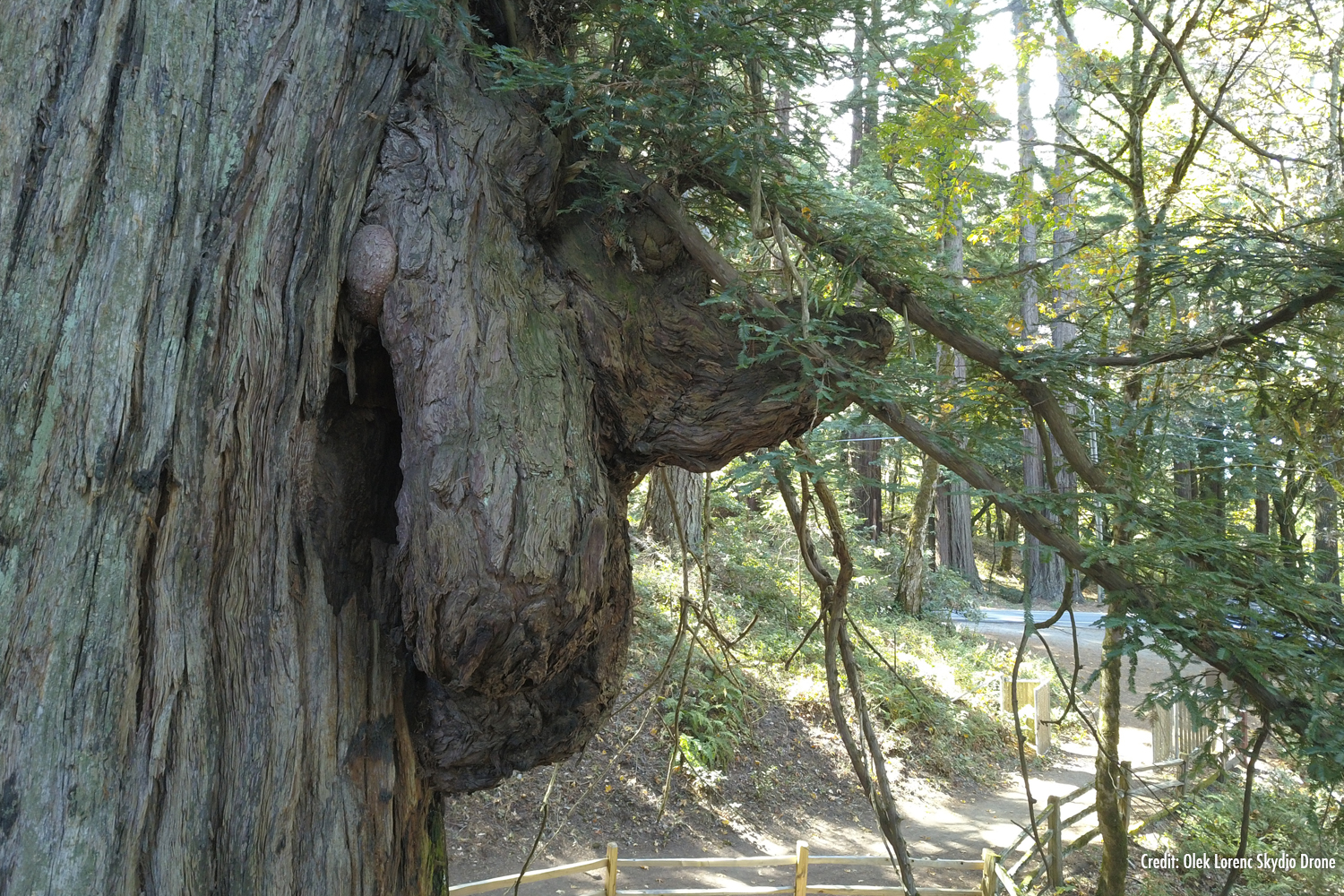
Big Burl
Can you find the big burl on Methuselah’s Trunk? How do you think it formed? -
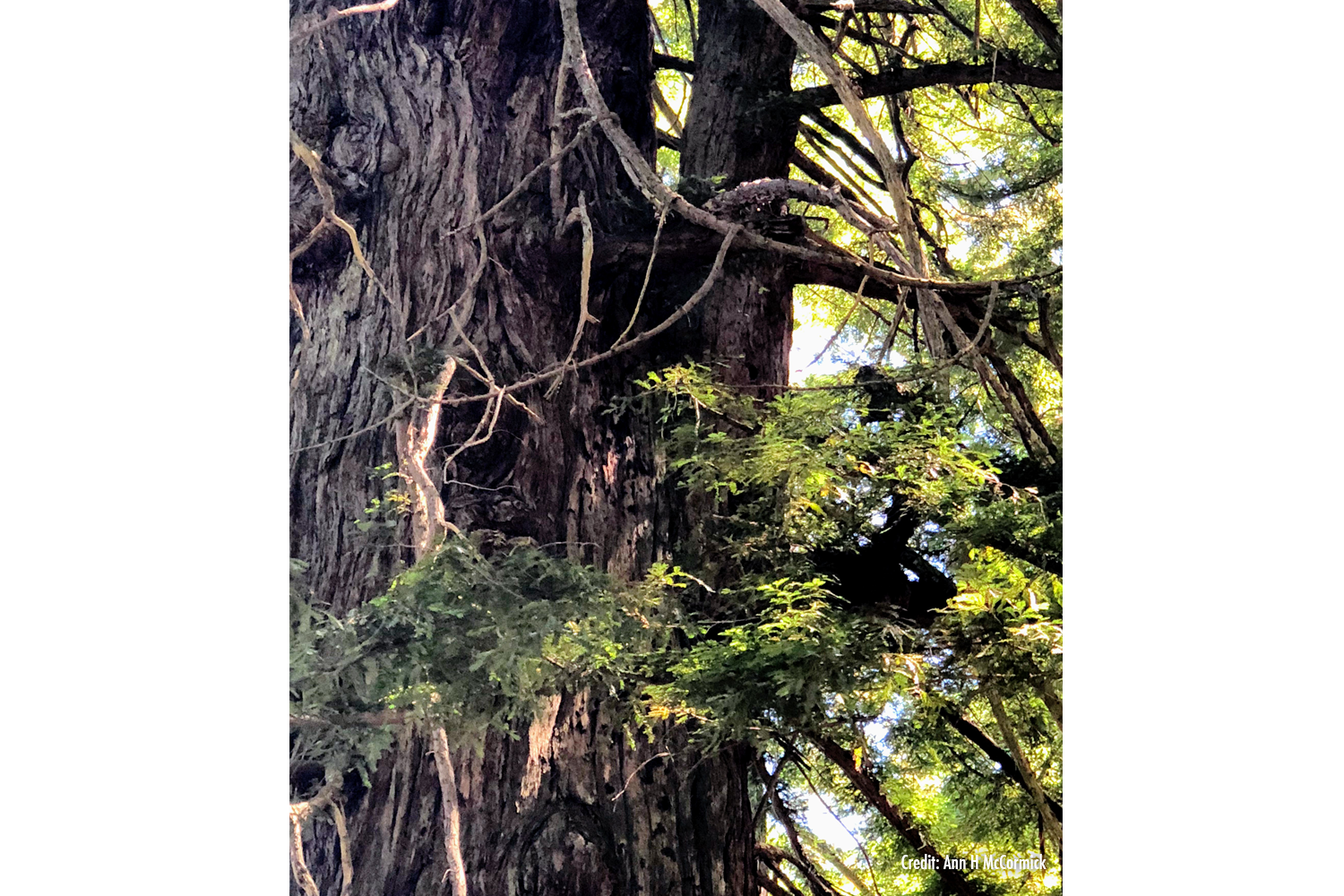
The Trunk Grew a New Tree
Look up. Can you see where a new tree began growing out of the Big Old Tree’s trunk? Do you think the tree might have leaned after an earthquake, and needed the new trunk for balance? -
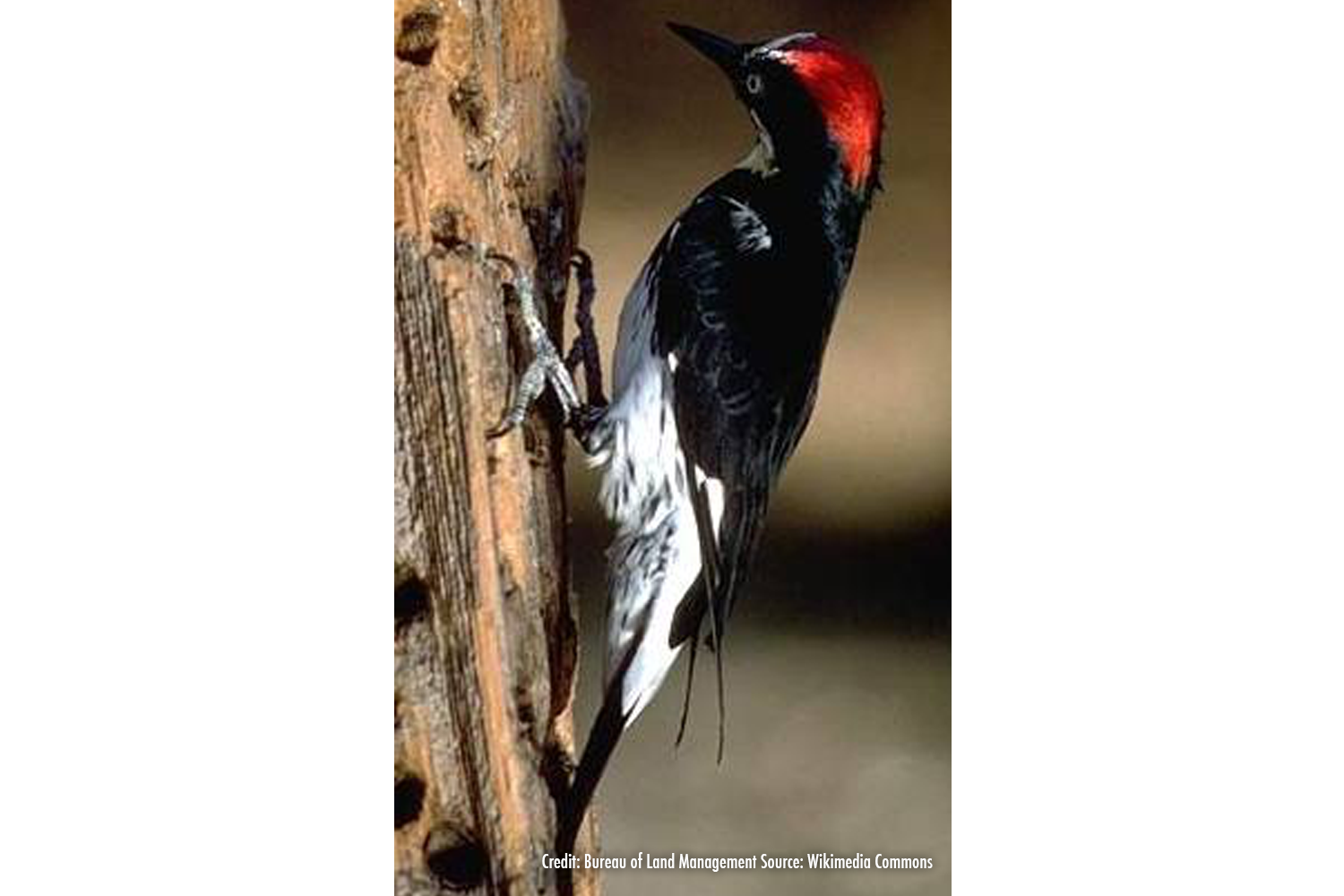
Acorn Woodpecker
When redwood trees are decaying, acorn woodpeckers use their beaks to make holes in the soft wood, and plant acorns in the holes. Later the woodpeckers come and harvest worms that grow in the acorns! Methuselah is not decaying, so doesn’t have these beautiful birds. Can you find other redwood trees that do have lots of acorn holes? -
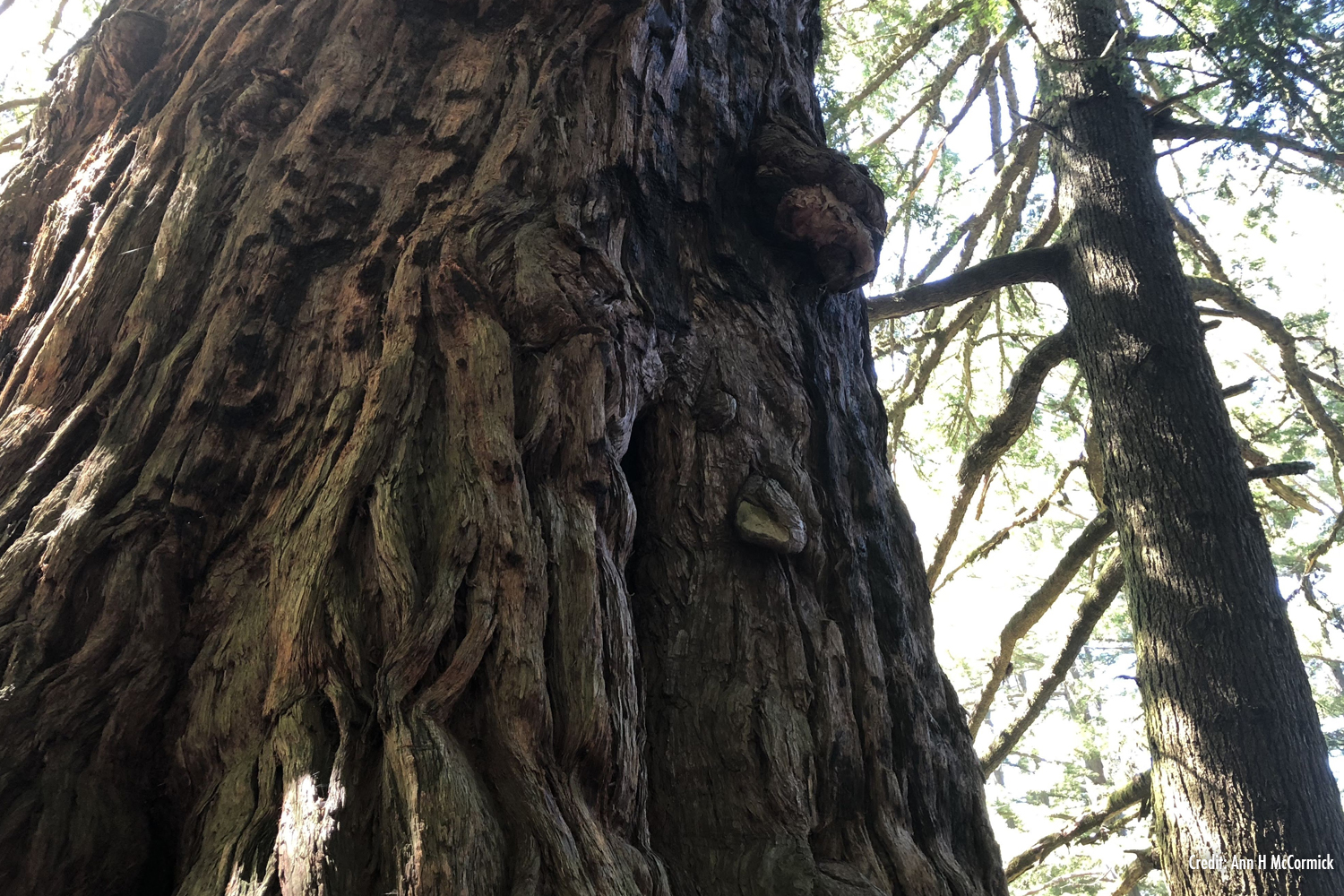
Burls
After big fires challenged their bark, redwood trees form burls. How many burls can you find on Methuselah’s trunk -

Grizzly Bear
All the Grizzly Bears are gone now, but many lived near the Methuselah Tree for over 1,700 years. When the Ohlone people came nearby while traveling from the Bay to the Ocean, they had to watch out for these bears. -
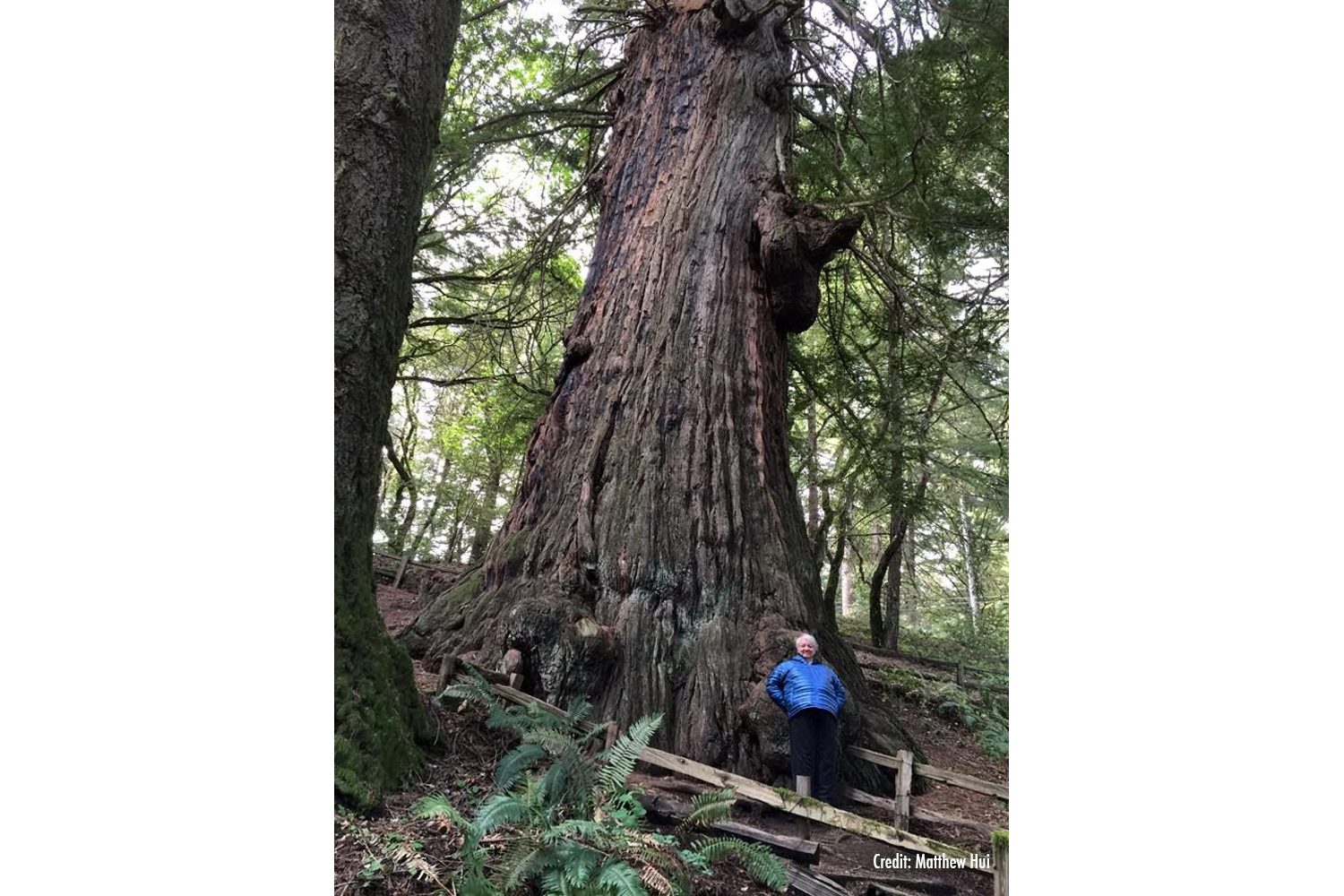
Leaning Against the Tree
Many people come to quietly lean against the tree, or sit nearby. Where do you like to be near the Big Old Tree? -
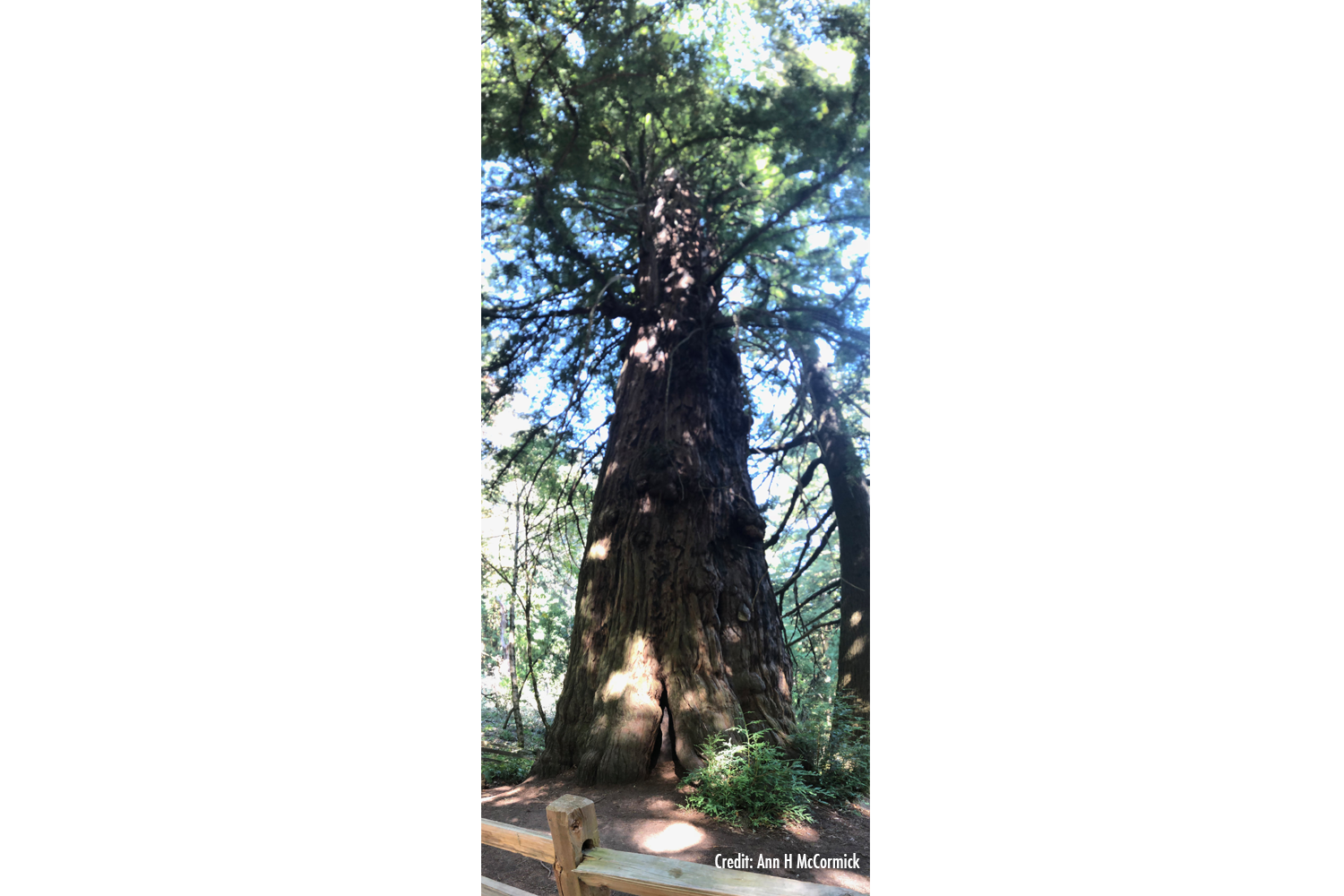
Tree Cave in the Trunk
In the center of this view of Methuselah is the “tree cave” formed by fire long ago. Be careful not to disturb the tree if you go inside. Step lightly, and be very quiet—you might be surprised what you experience
Base
-
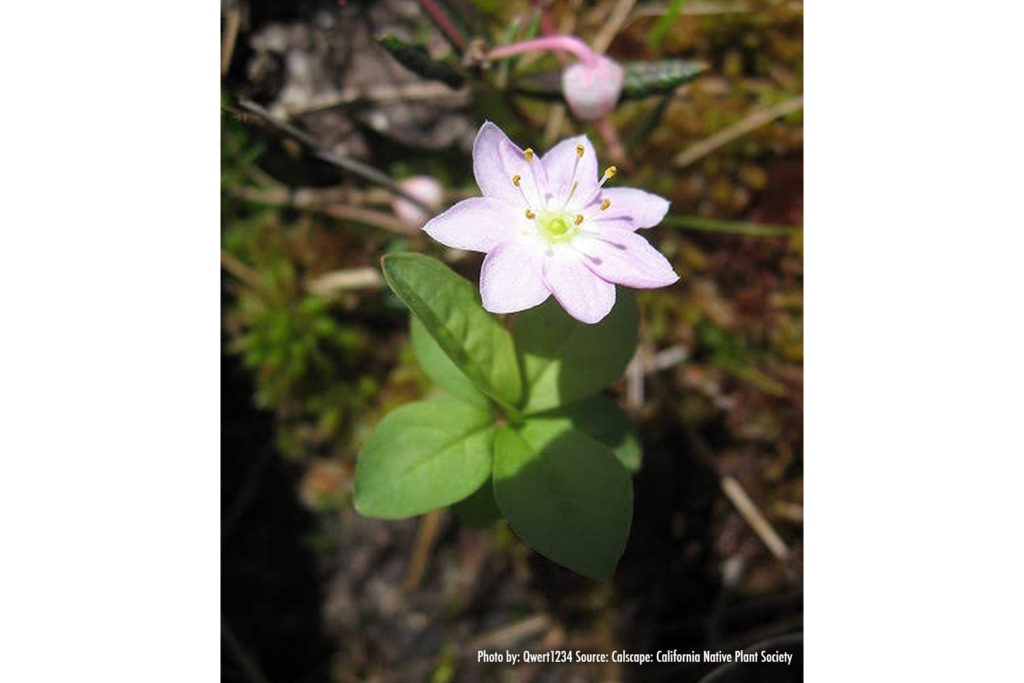
Starflower
In little patches of sunlight near Methuselah, you can find a delicate pink flower, the Starflower. If you look after the sun goes down, each flower wraps under leaf until morning. See if you can find some. Look, don’t pick these wild natives. -
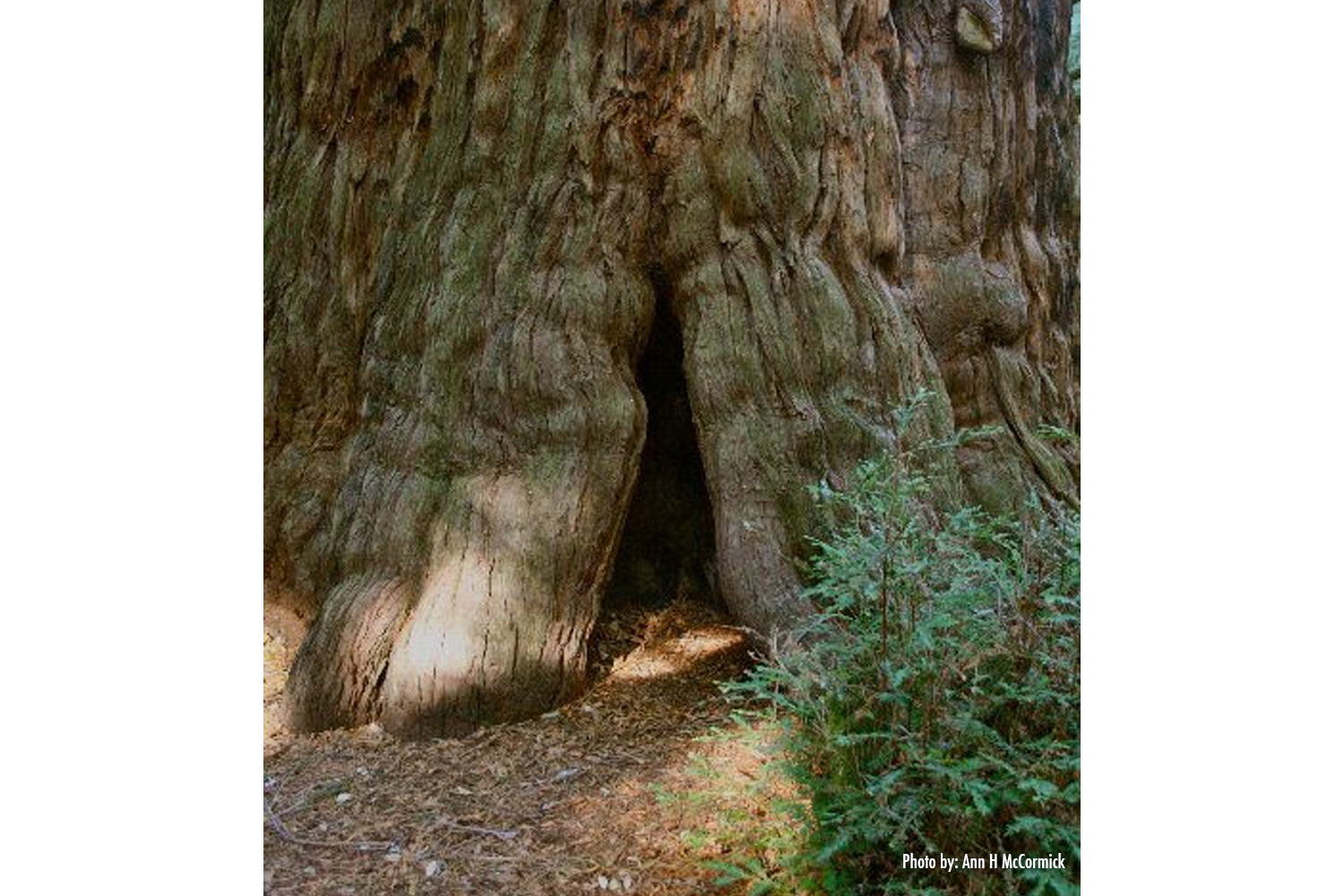
Tree Cave
Children are drawn to the little cave at the base of Methuselah. Can you imagine the intensity of a fire that could burn this hole inside the tree? Be gentle with the tree to discover the inside. A Tibetan monk crawled inside and didn’t want to come out. If you crawl inside, be very respectful of a living tree that has lived nearly 2,000 years. How do you feel inside the tree? -
Watching Banana Slug
Banana slugs are slimy native heroes of the forest floor. They eat dead plants and animals and return nutrients to the soil. If the forest didn’t have them, it would be very different. Look but don’t bother this slug because touching it dries it out. Click image for a video on banana slugs. -
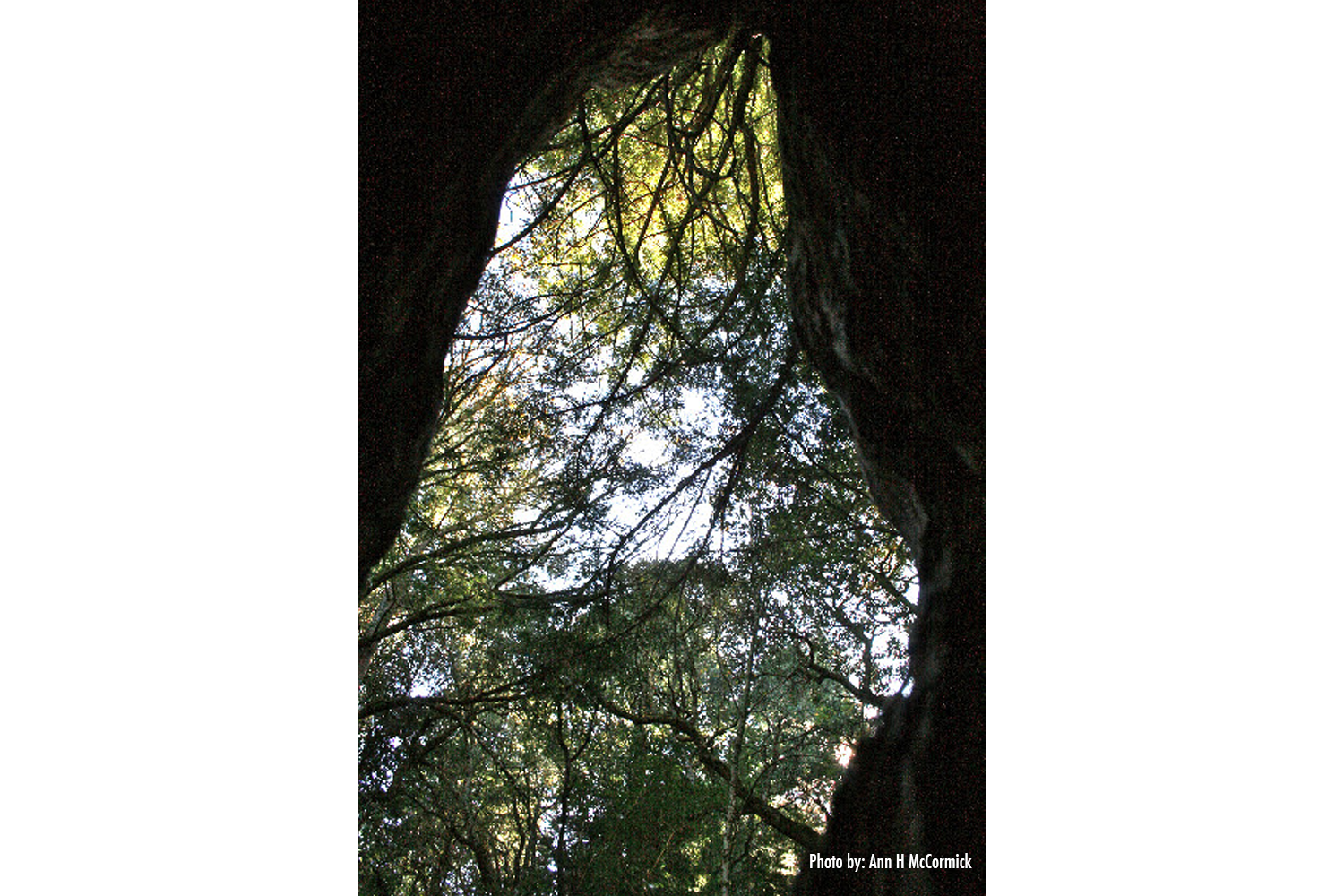
Inside Tree Cave
If you lean back inside the tree cave in Methuselah’s base, you can see this view looking out. can you match the inside of the opening to the outside? -
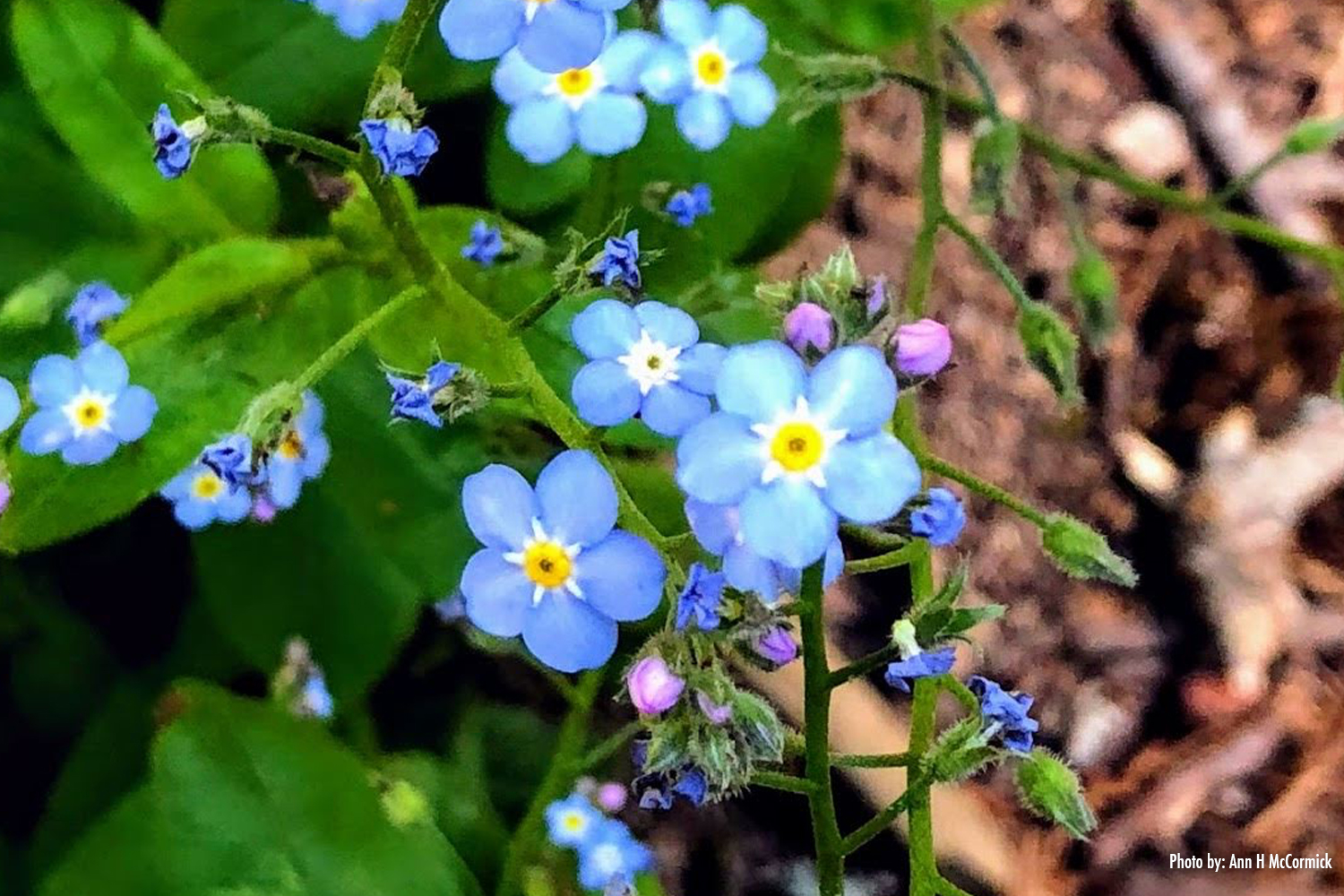
Forget-me-not
Gardens often feature little blue flowers, Forget-me-nots, and they grow wild, too. Do you like the spots of color they bring to the forest? -
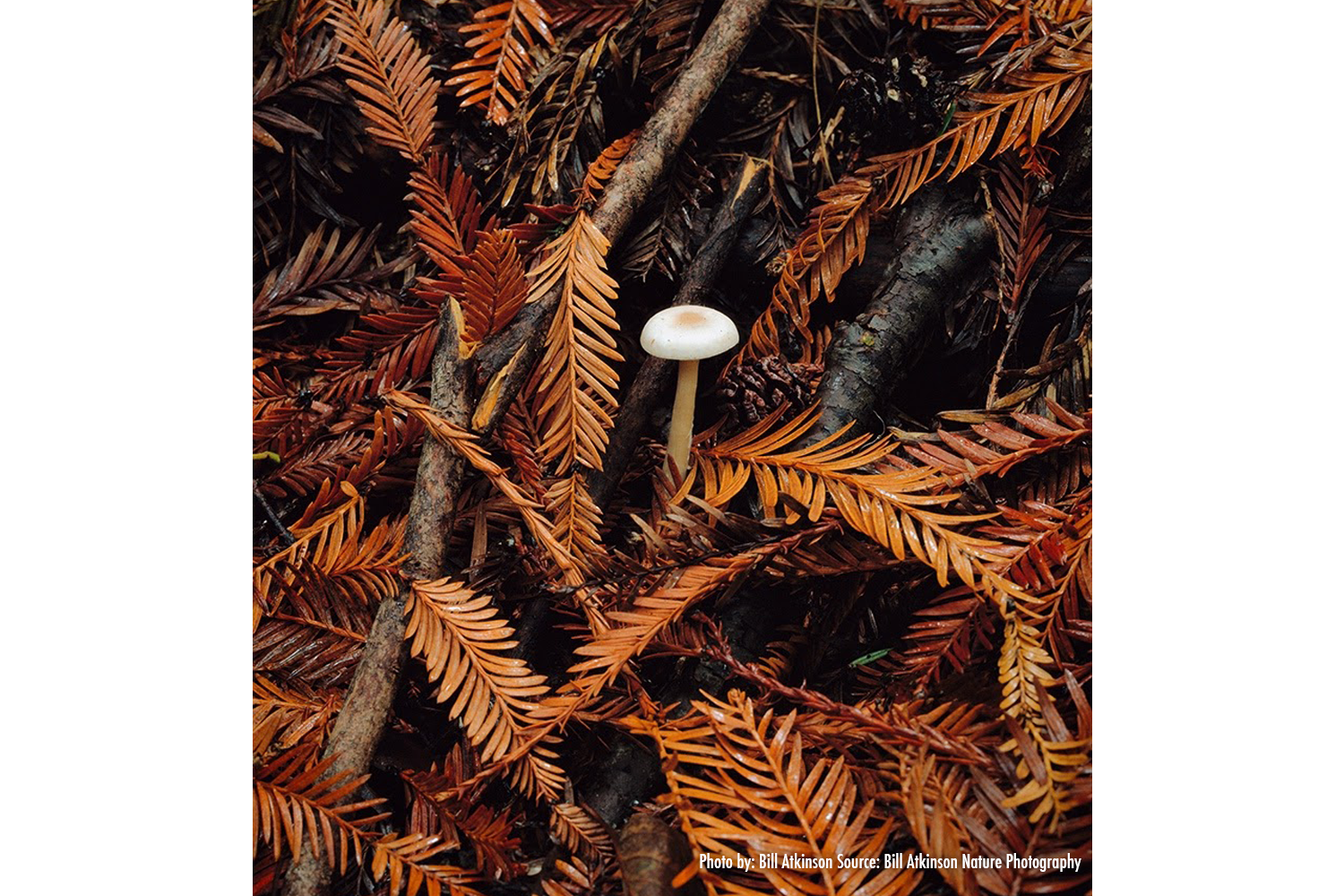
Mushroom
Winter rains cause mushrooms to rise up from the ground and release spores. The spores grow roots called mycelium that can carry nutrients to nearby young trees, even oak trees and Douglas Fir trees. You can smell the soil above the Methuselah Tree and notice the musky fragrance of mushrooms. If you do that, put the soil back and cover it with the litter on the ground so everything can keep growing. -
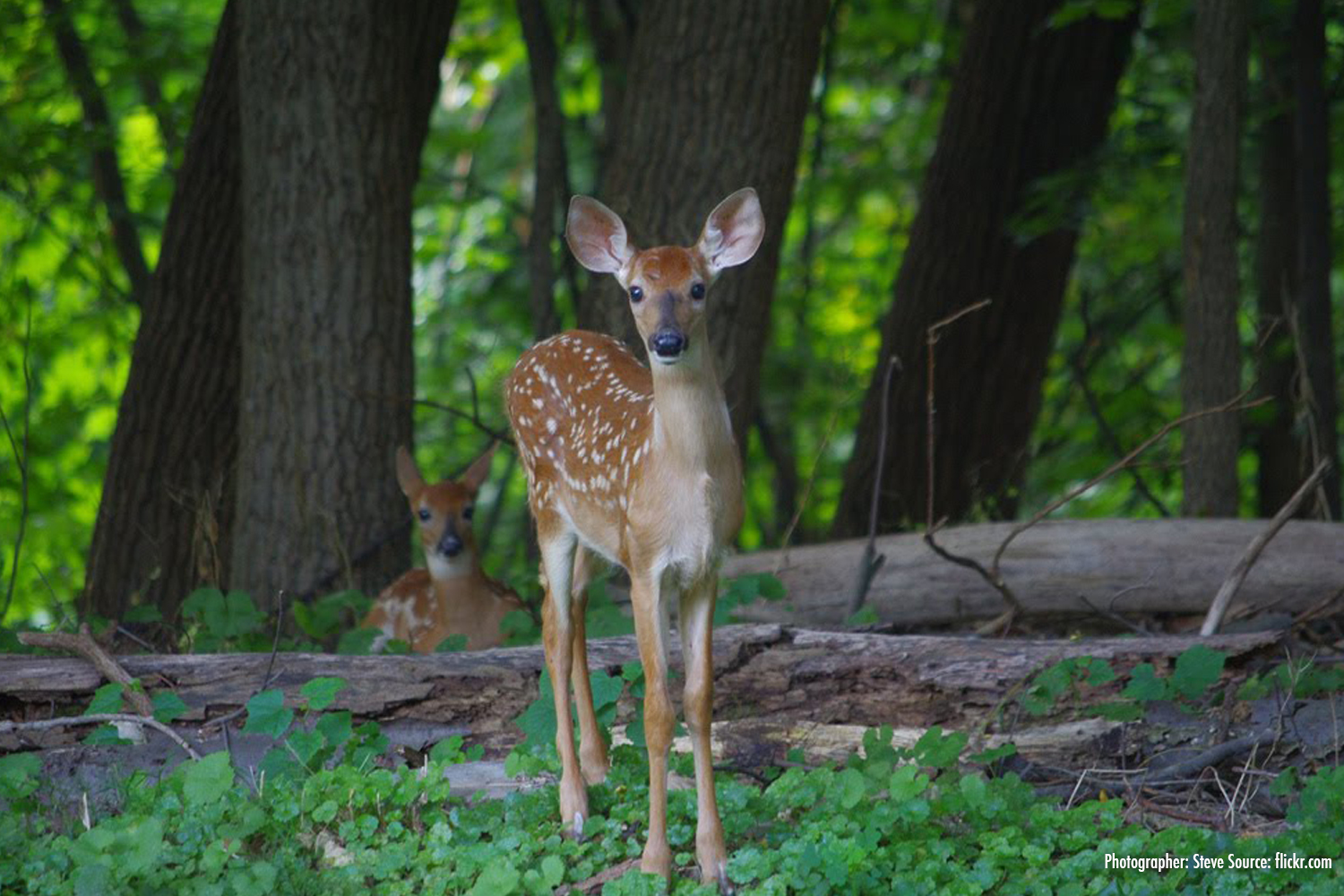
Two Fawns
Ohlone people hunted deer and depended upon them for food. They had to compete with other animals who also hunted deer. There are still many deer left in the redwoods. Have you ever seen a little faun curled up? It’s important not to touch it, because the mom will probably be back very soon. -
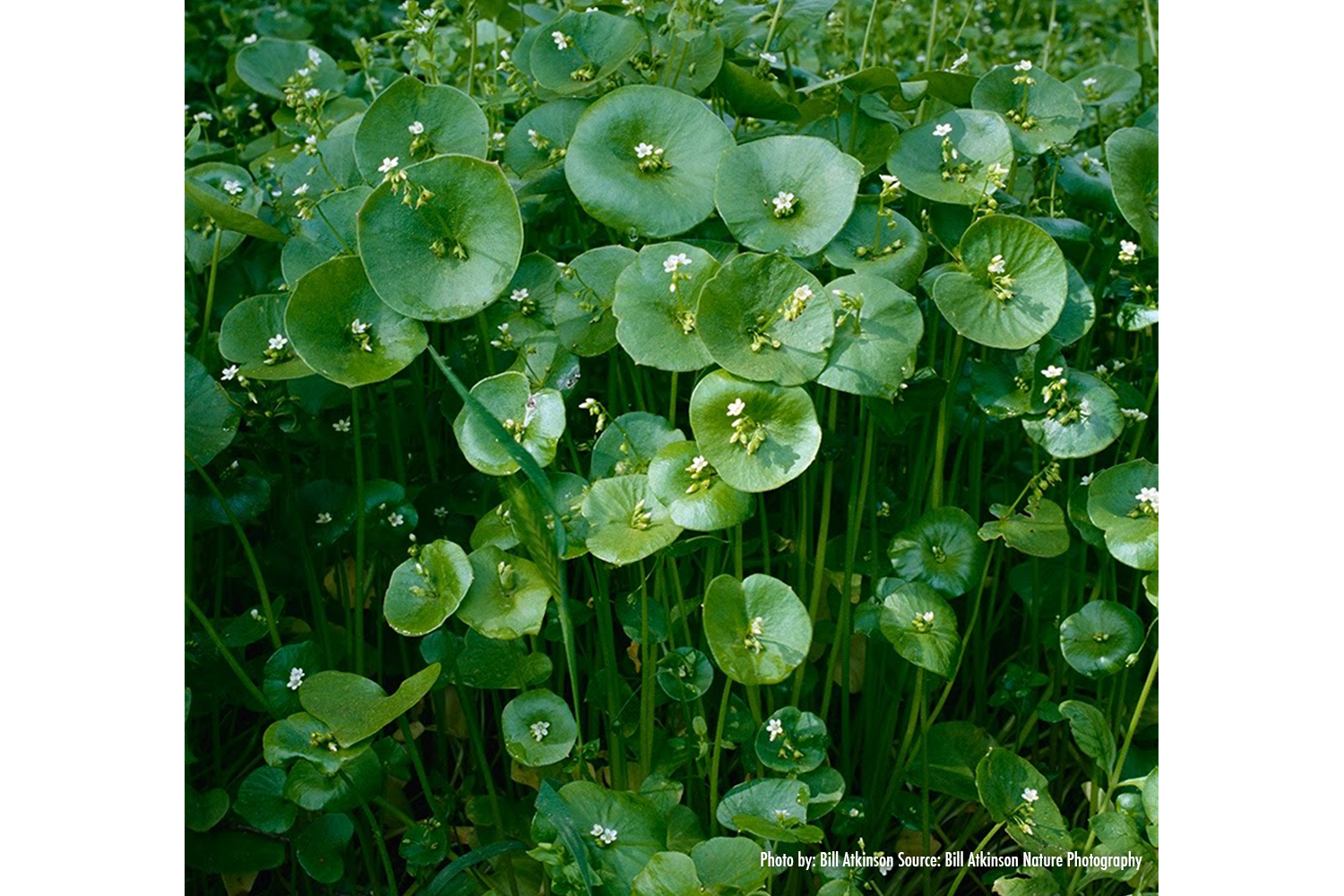
Miner’s Lettuce
Miner’s Lettuce is a good food to know about. You can eat it; it has a biting taste, sharper then spinach. It grows near the Methuselah tree, near the road. Can you find some? -
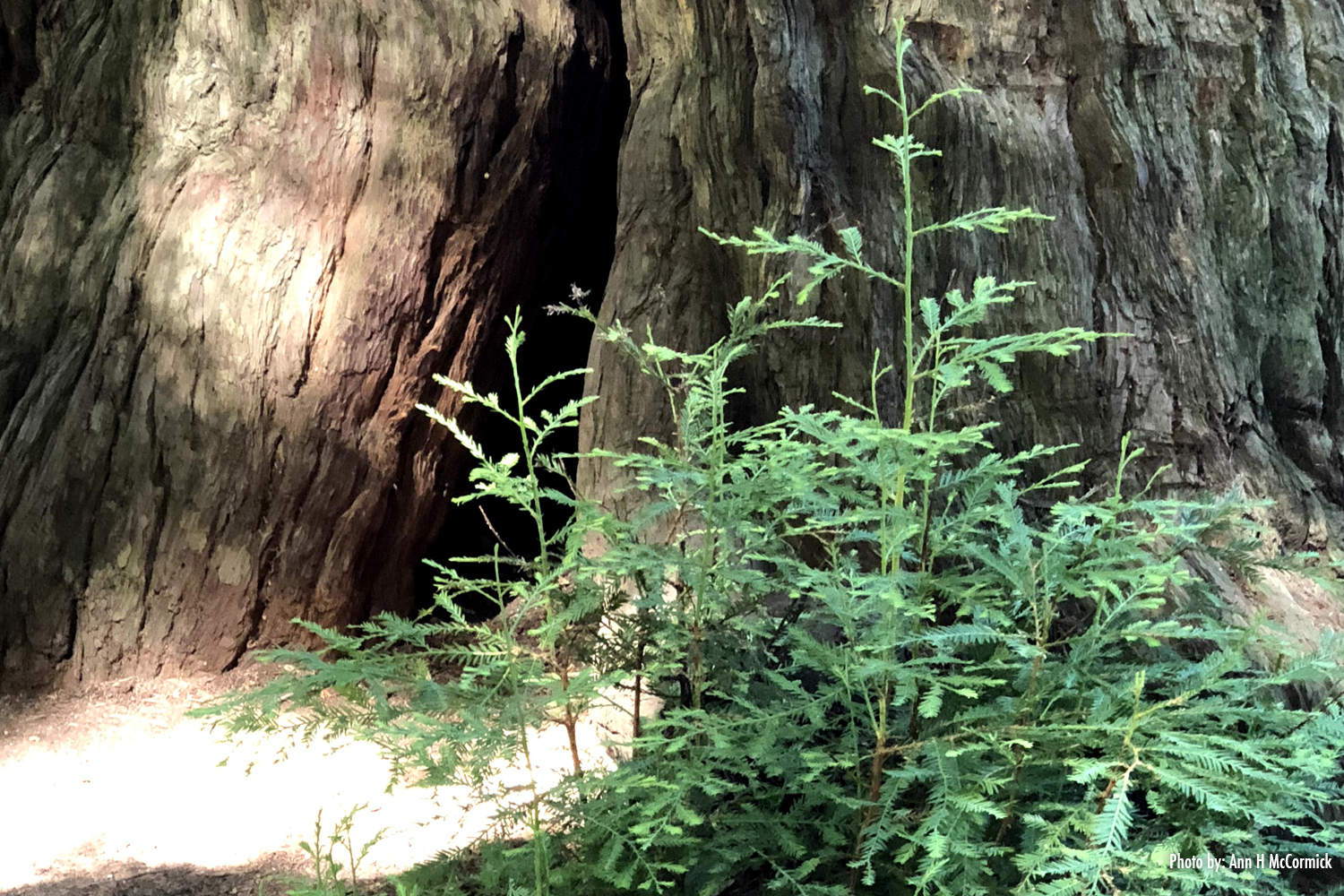
New Sprouts
Beside Methuselah’s tree cave there is a new crop of young redwoods growing, possibly clones of the Big Old Tree. 80% of redwoods grow from sprouts from the tree base, and 20% from seed. So the tree you see may have lived a million years through its sprouts. You can see tiny buds just poking their heads up, and tiny trees coming along. When an old tree dies, there are often a circle of sprouts growing around the old tree, so a fairy ring of new trees grows where the old one died.
Hills
-
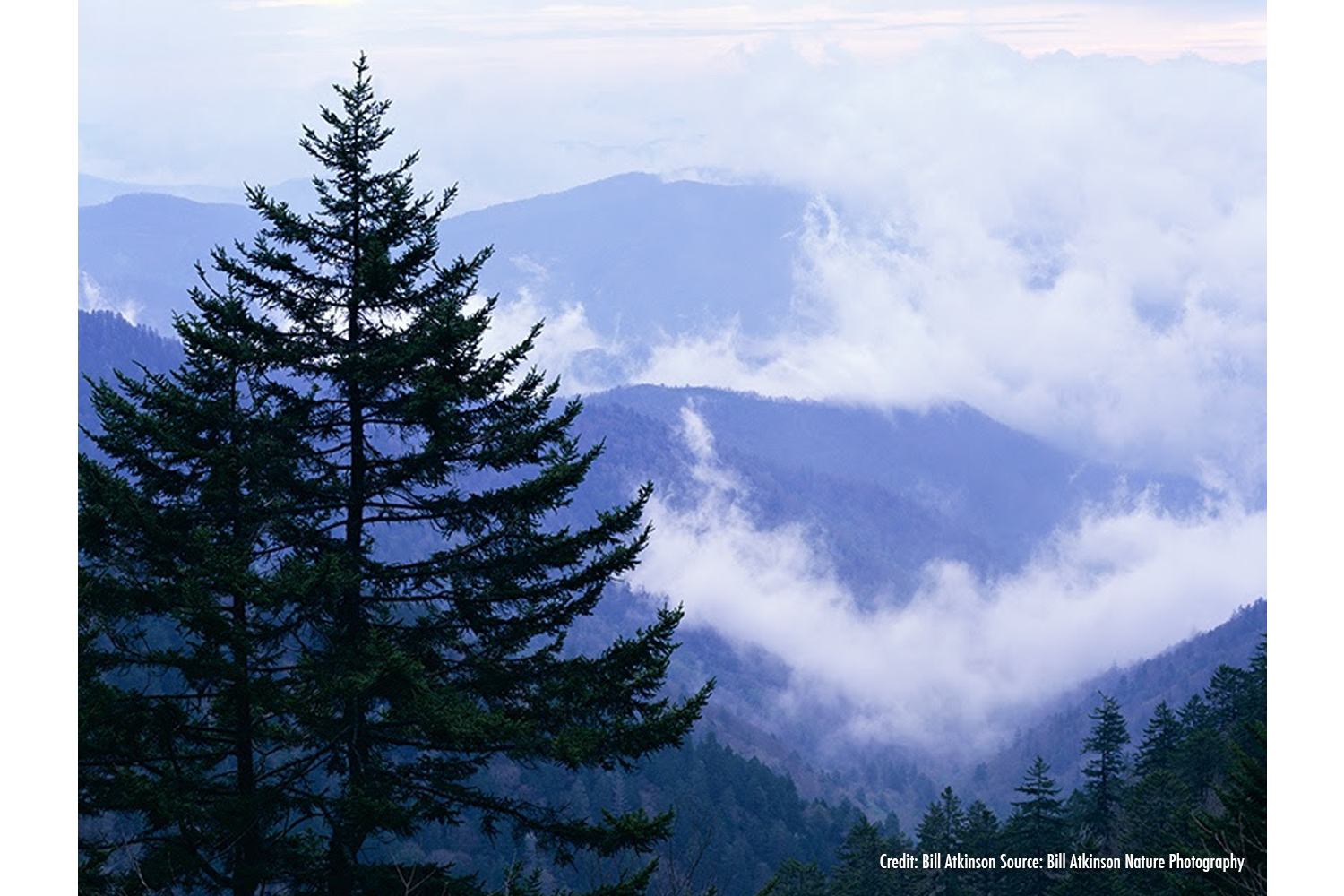
Morning Fog Rising
Coastal Redwoods depend on moisture in the fog that rises up from the ocean when warm air hits the cold water. In summer, coastal redwoods can receive up to half their moisture from fog. The leaves of the redwood tree can absorb water from the fog, and cause fog to gather and drip on the soil. Have you ever seen wet soil under a redwood, and dry soil just outside the range of “tree drip?” -
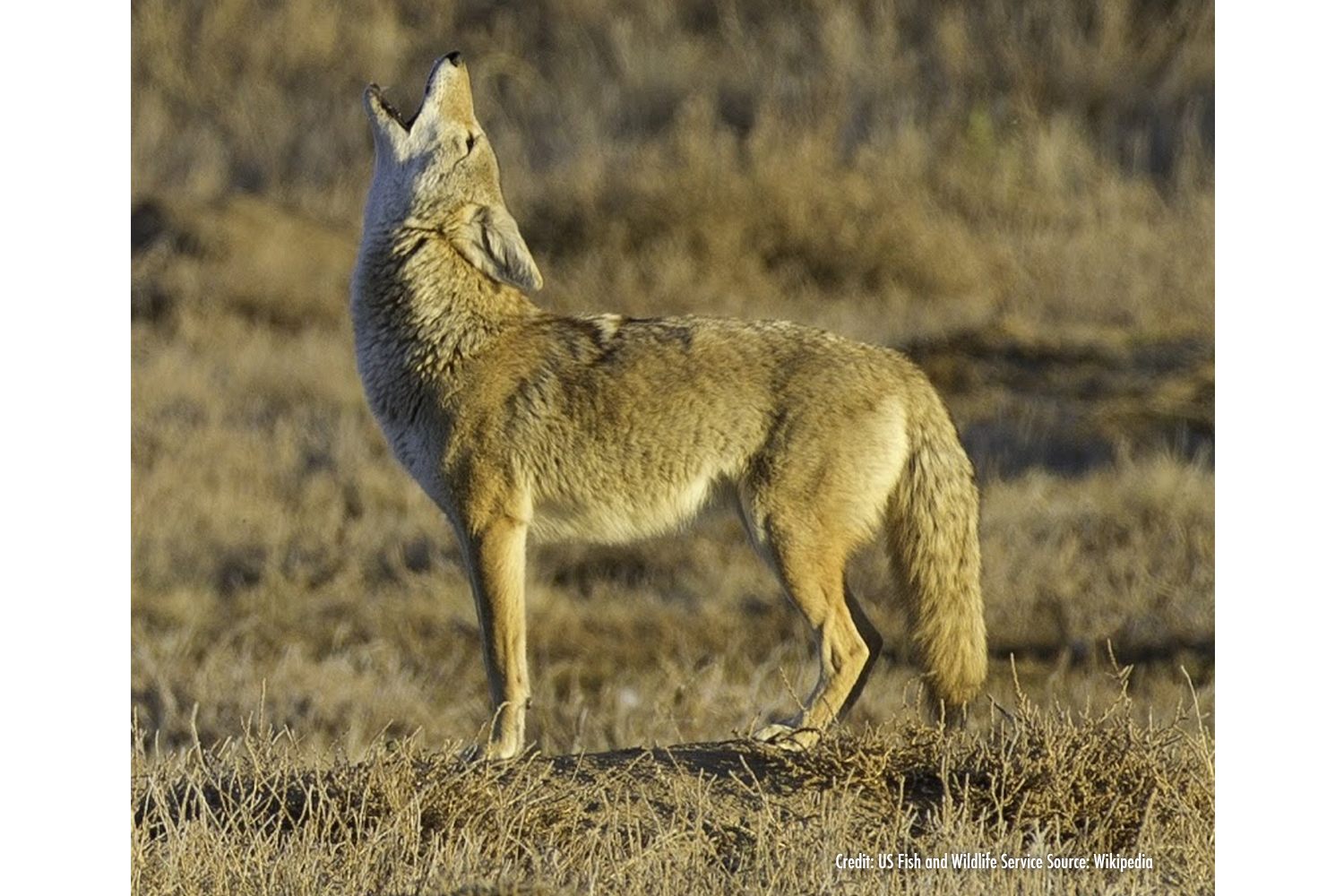
Coyote Howling
Coyotes are members of the dog family. They are distinct from dogs in their erect ears and drooping tail. They are meat eaters, preferring to eat rabbits, mice and squirrels, but they eat almost anything. They can jump 12 feet (horizontally) and run 40 mph. They are very smart and have a sharp sense of hearing, sight and smell. Coyotes live in the second growth redwoods near the Methuselah Tree. -
Mountain Lion
Mountain lions eat larger prey, such as deer, but also small animals such as mice and squirrels. They very rarely attack people. They can jump up to 45 feet, and run 50 MPH. Mountain lions live in the second growth forests around the Methuselah Tree. -

Acorns Growing
Acorns, the nut of an oak tree, were an important crop for Ohlone people, who gathered the acorns, soaked them, and ground them to fine flour, then cooked them. Where Ohlone people lived, you can find grinding rocks where women used a stone to grind the acorns, which took a long time. Can you find acorns under oak trees growing near the Methuselah Tree? -
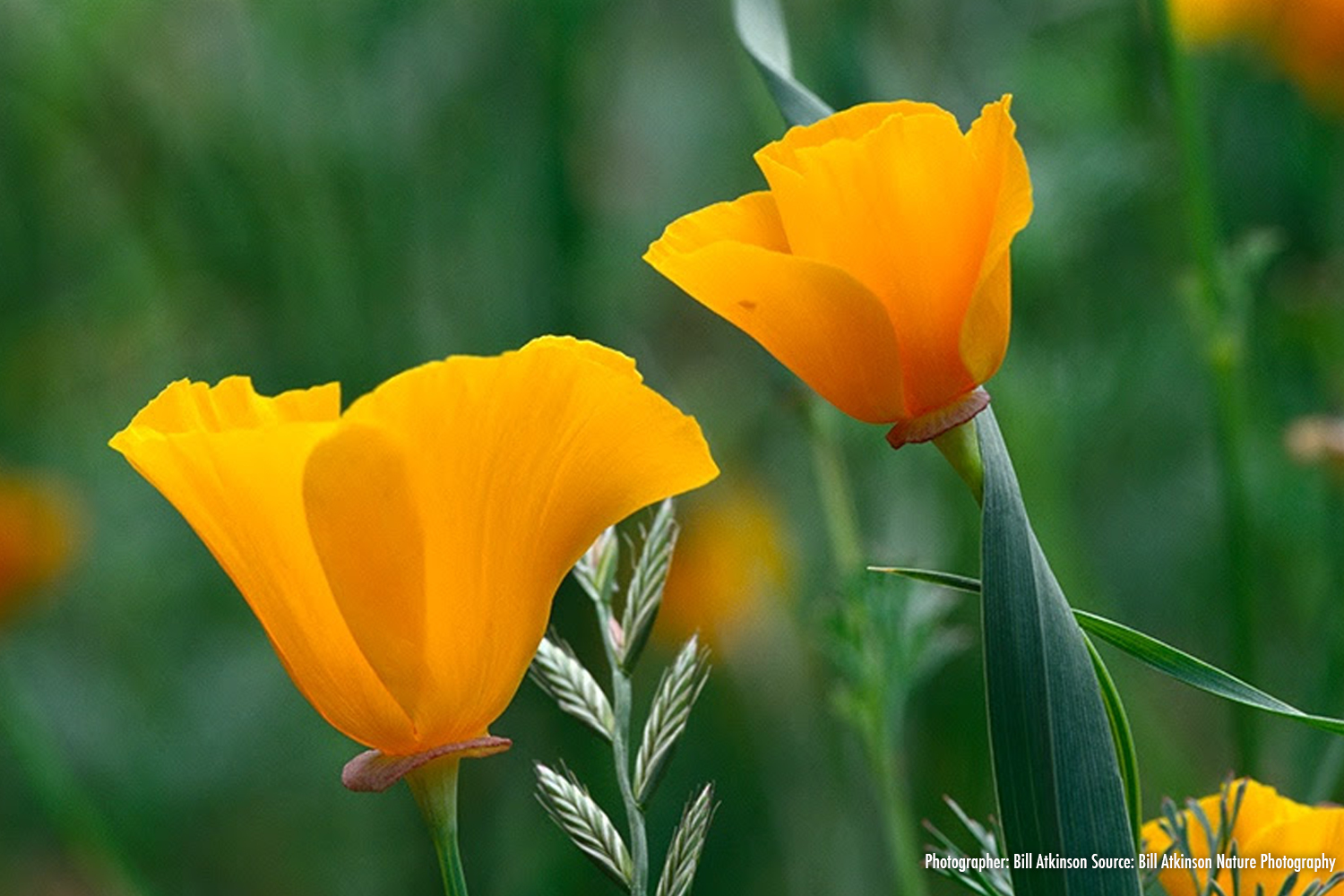
California Poppy
California Poppies became the state flower of California in 1903, though now they grow all over the world in similar climate and soil conditions. It is illegal to pick them on government land, but you can grow them at your own home and pick them. -
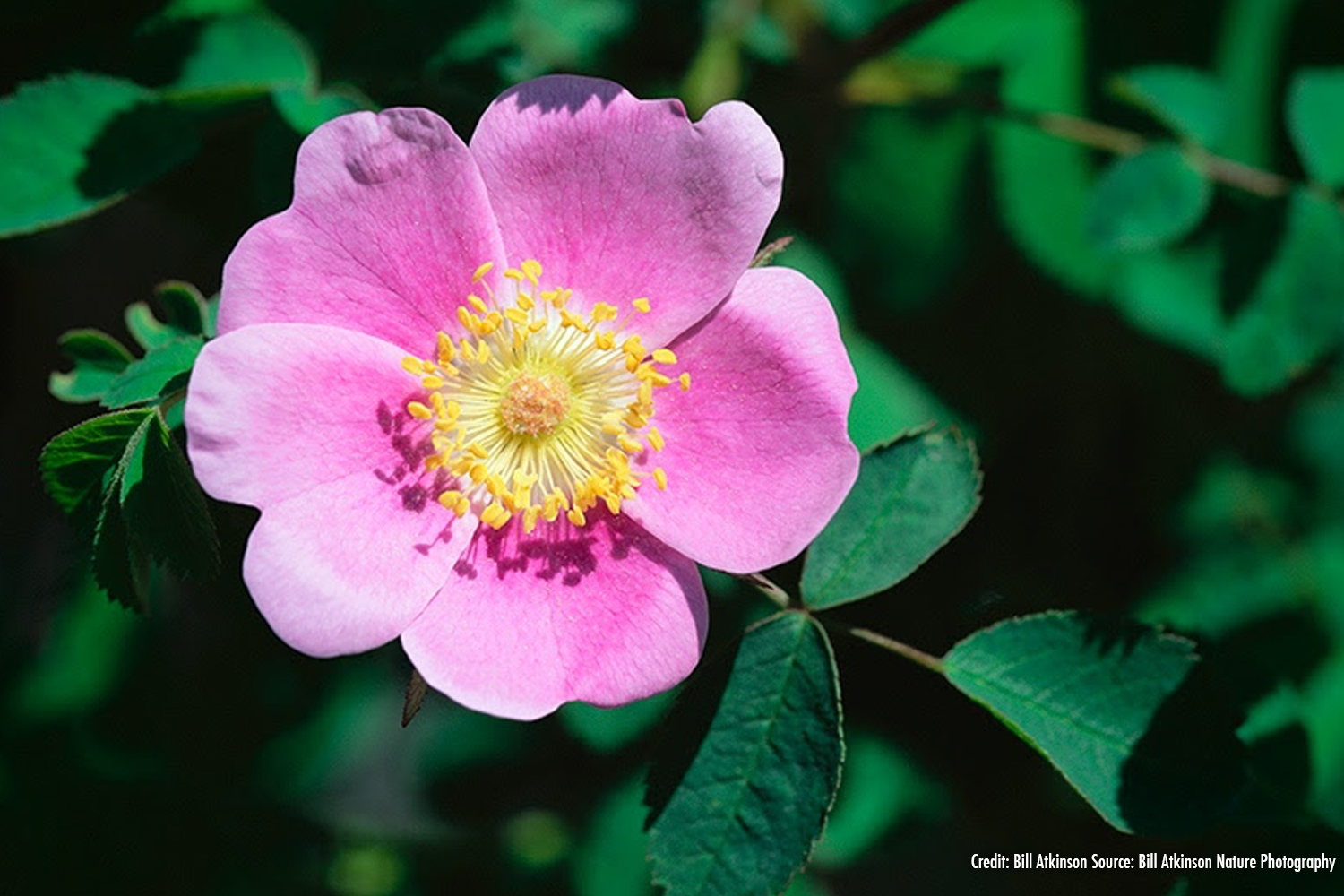
Wild Rose
Wild roses have five petals, spread flat. In Fall, they have delicious rose hips seeds. Have you tried making rose hips tea? -
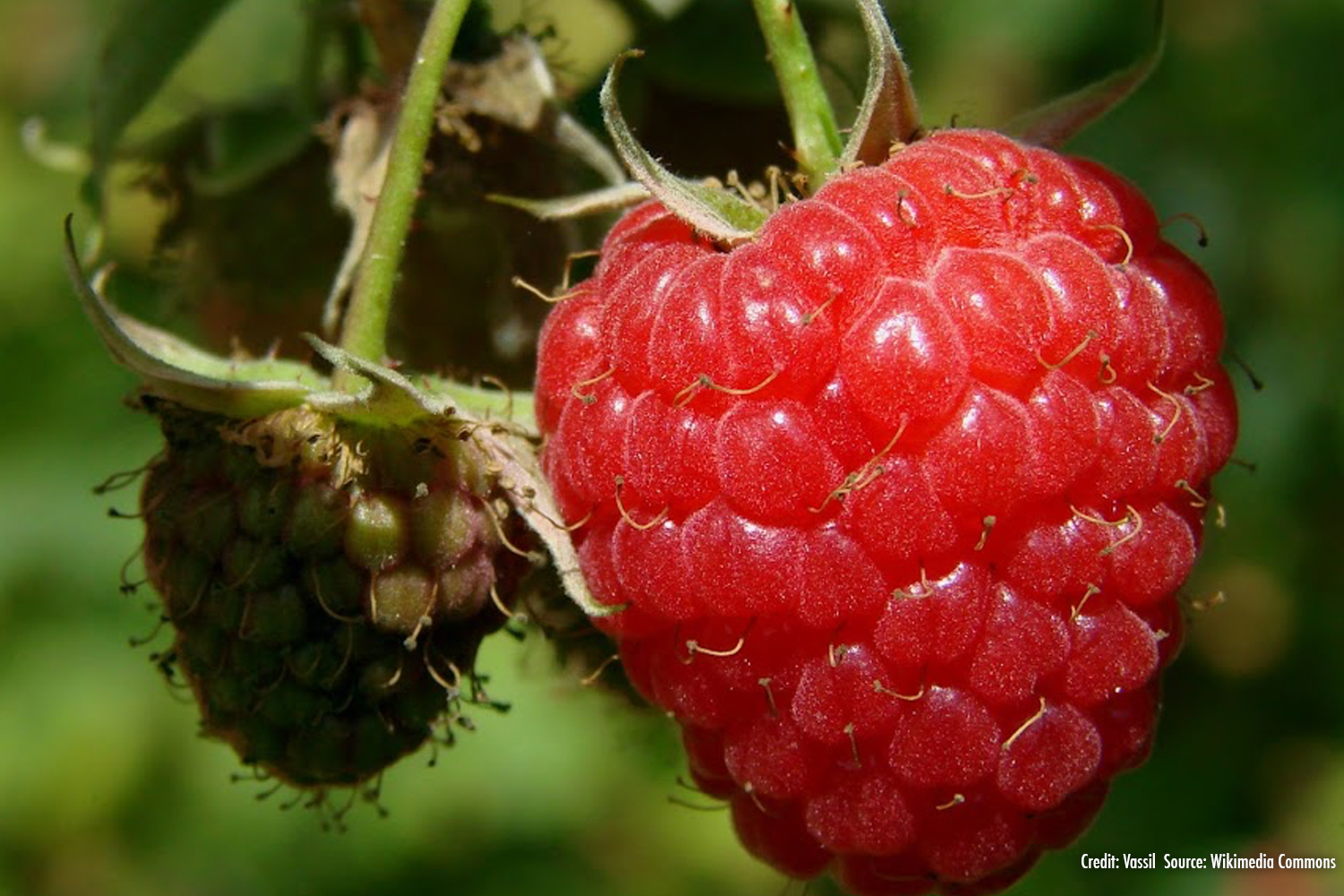
Raspberries
Raspberries were picked and eaten by Ohlone people for a long time, though blackberries were introduced in the 1700s. Do you know how to find the ripe ones? -
Hummingbird
Recently, sacred land of the Amah Mutsun, an Ohlone people, was set aside for them to plant and hold ceremonies. The land is named Mount Umunhum for “resting place of the hummingbird.” The hummingbird is a symbol of the tribal band. You can learn the story of how it brought fire to the people from Chairman Valentin Lopez. -
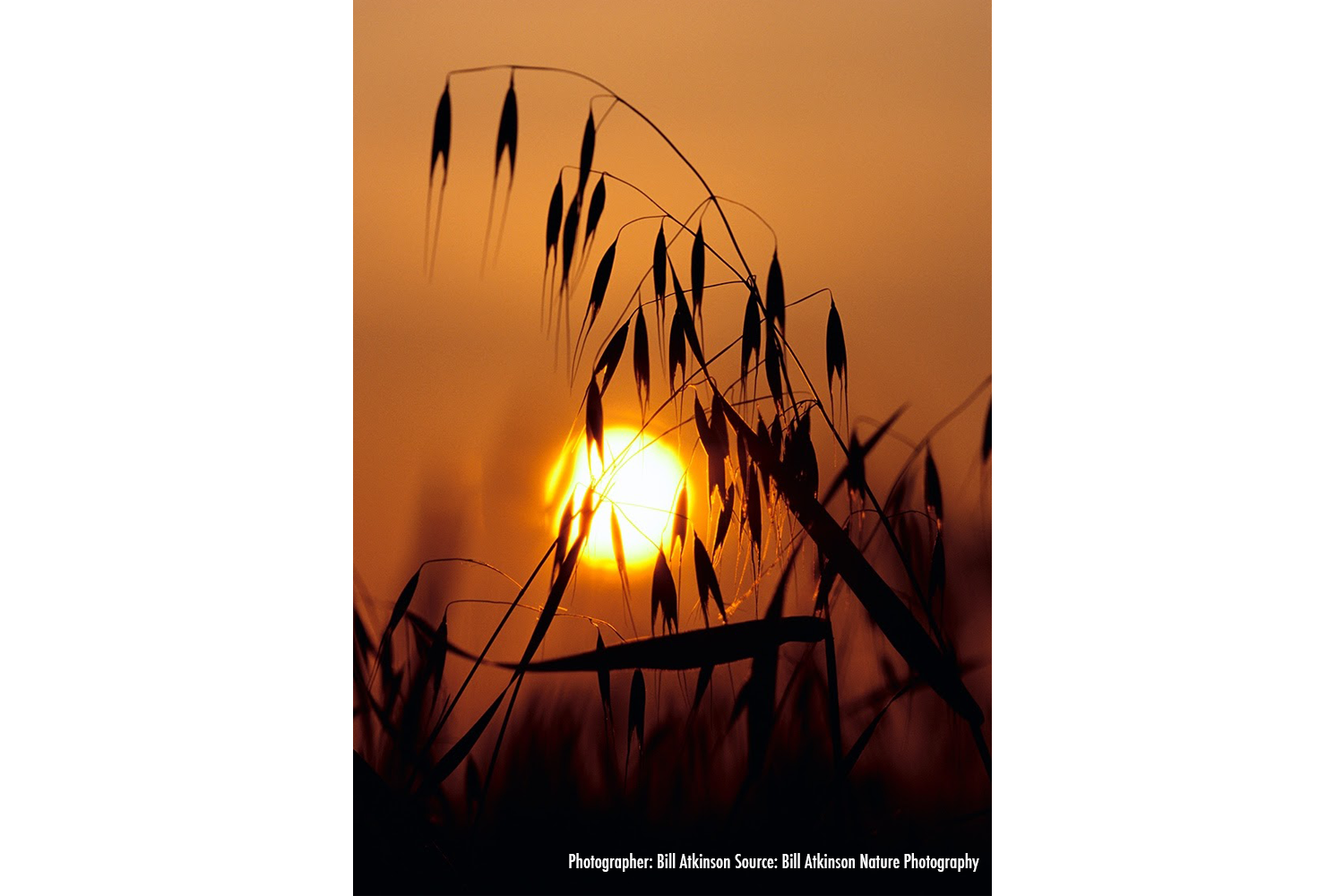
Wild Oats
Ohlone people collected seeds of wild grasses, beat and burned away the chaff, and ground them into flour. Not until the 1700s did they have wild oats, brought by the Spanish. -
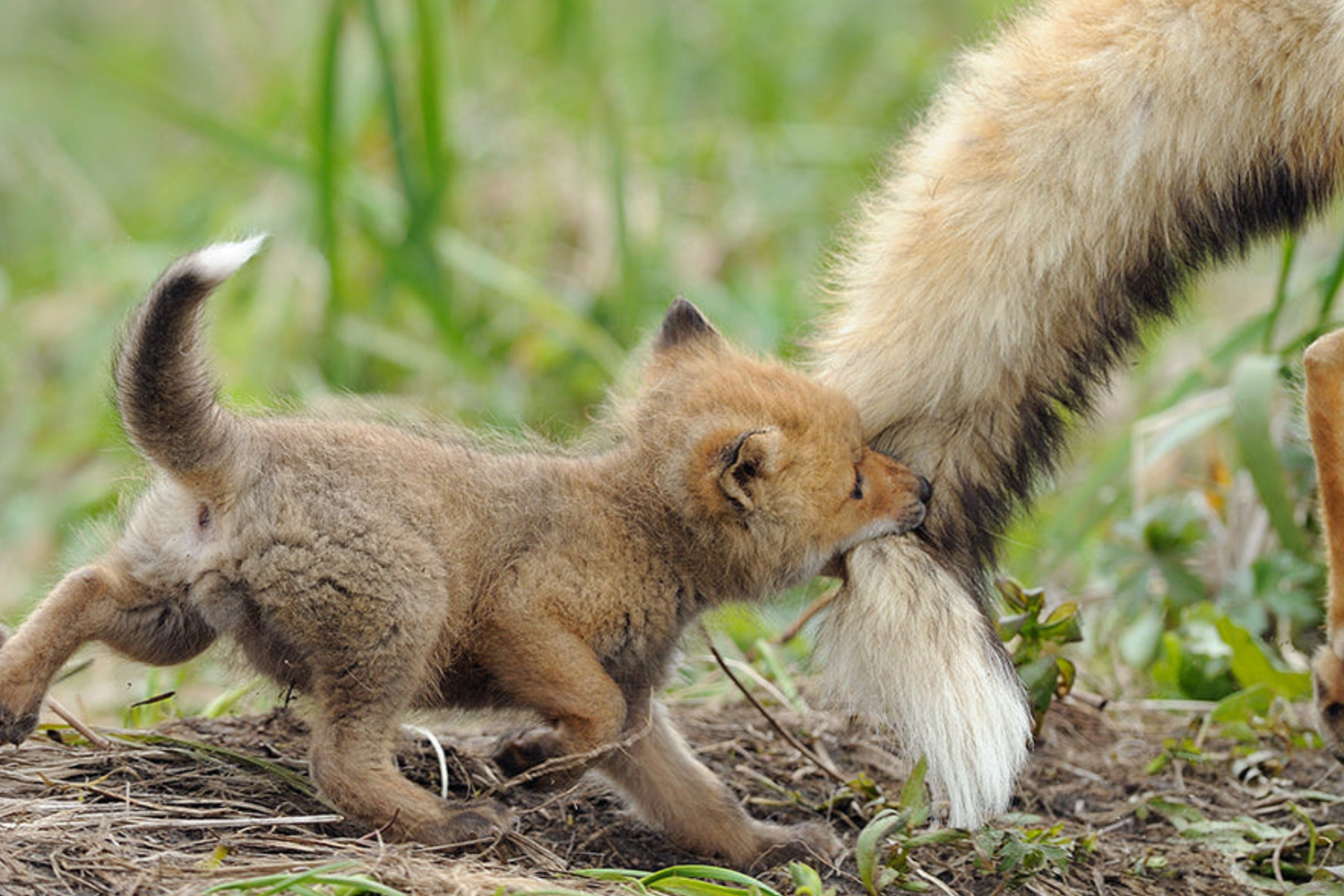
Fox Pup
Foxes are very playful animals. This little guy has grabbed his dad’s tail. They can still be found in Half Moon Bay, playing.
Coast
-
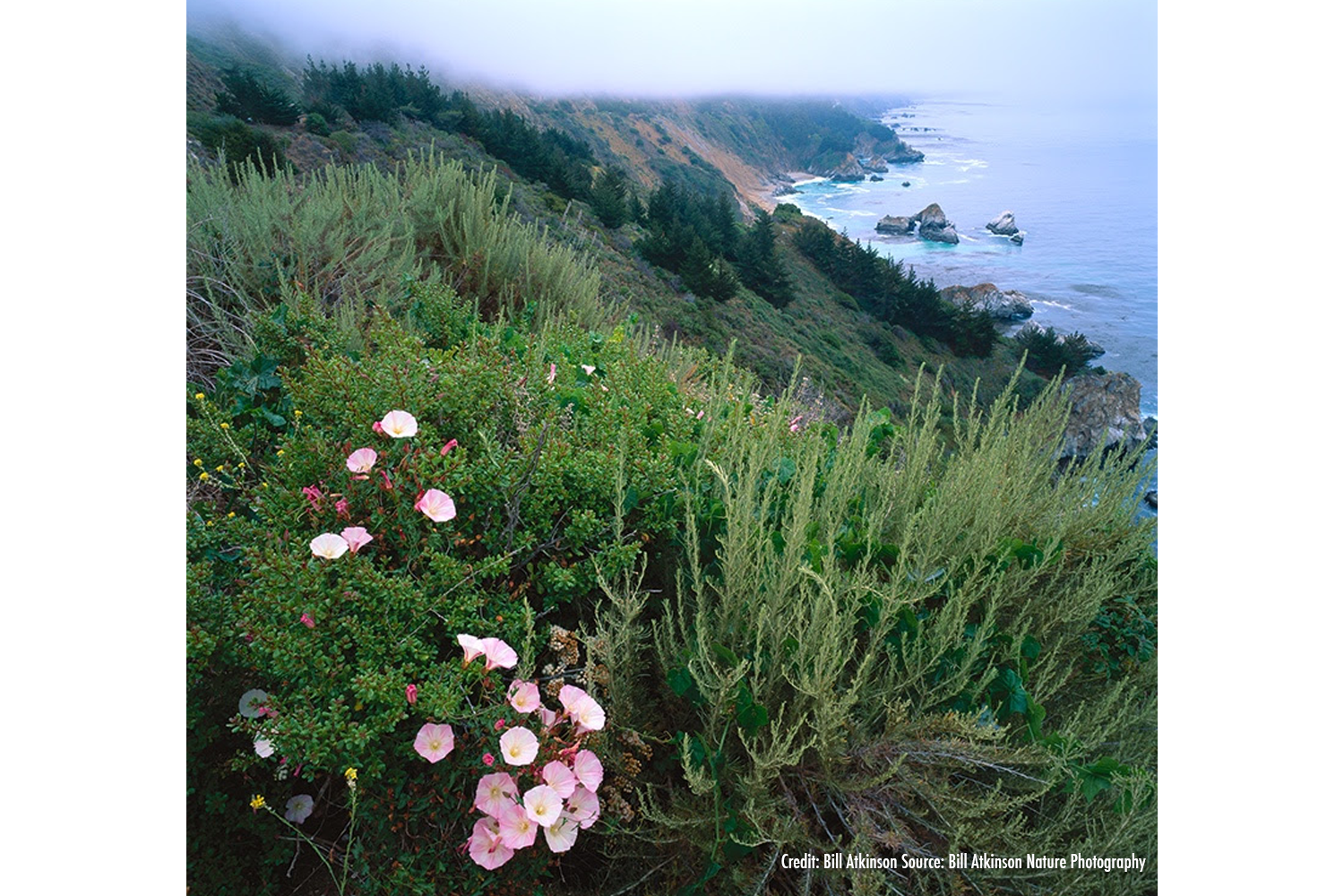
Morning Glories
Morning Glories are native plants of Northern California. Their color varies from place to place. -
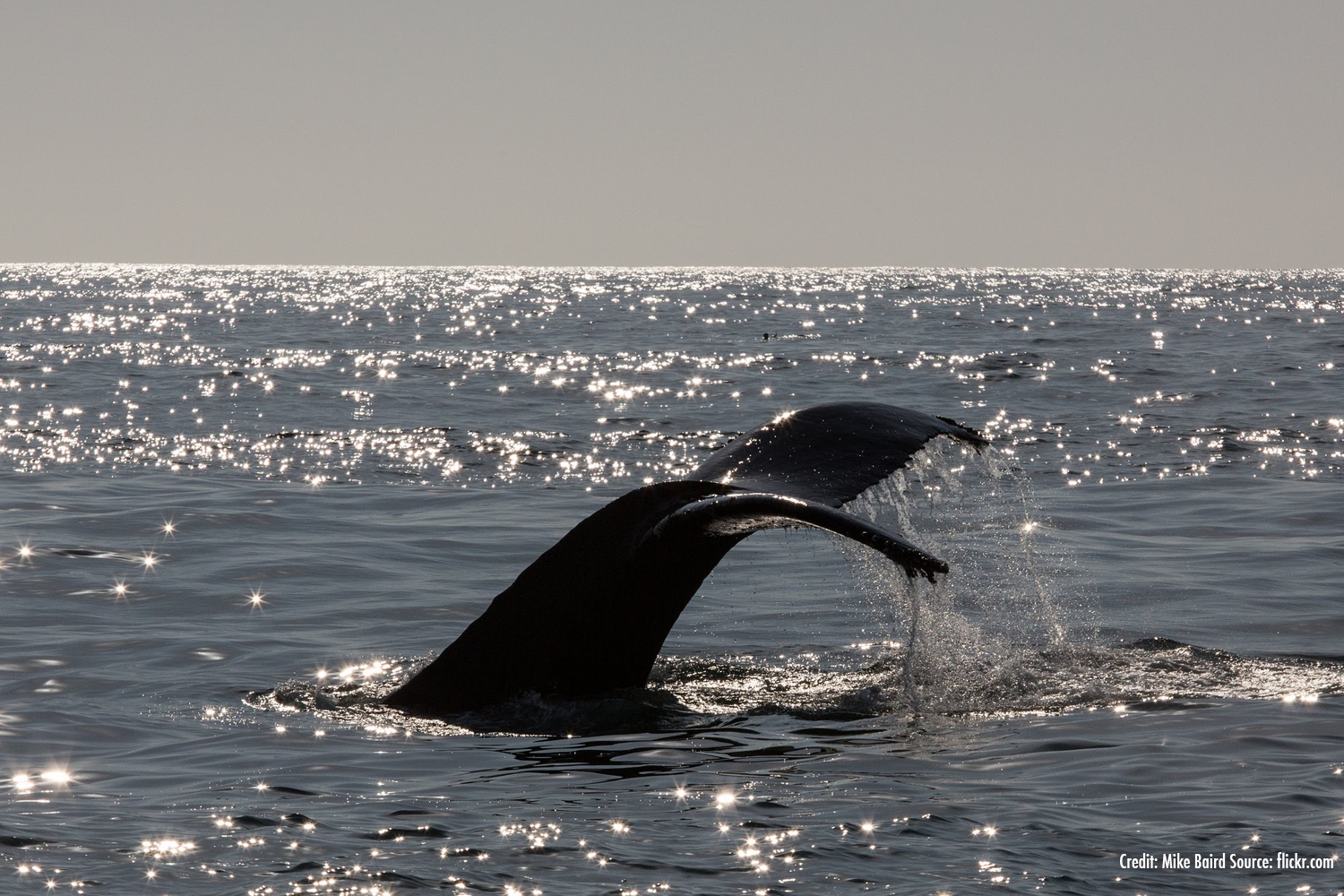
Whale Tail
Many Ohlone people lived near the coast, where they could collect sea animals and plants using digging sticks. They ate mussels, clams, oysters, sea urchins, crabs, fish such as abalone and salmon. They made boats out of tule grass, and near the coast, they could watch the migrating whales. When a whale was beached, they found it an important food. There is no report of any Ohlone person going hungry. They just took what they needed, so there was always enough. -
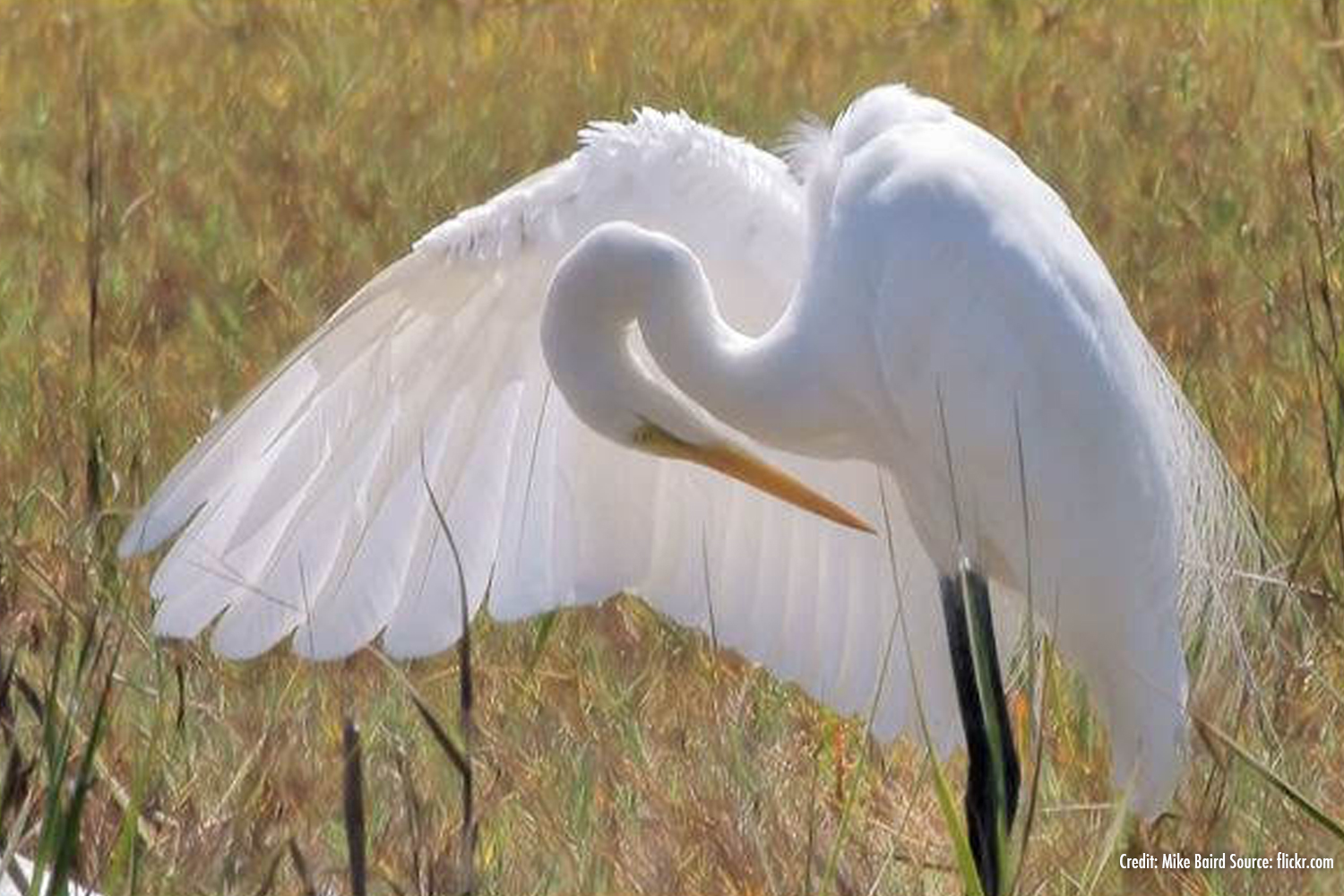
Egret Bowing
In the marshes near the ocean, Great Egrets live and raise their young. -
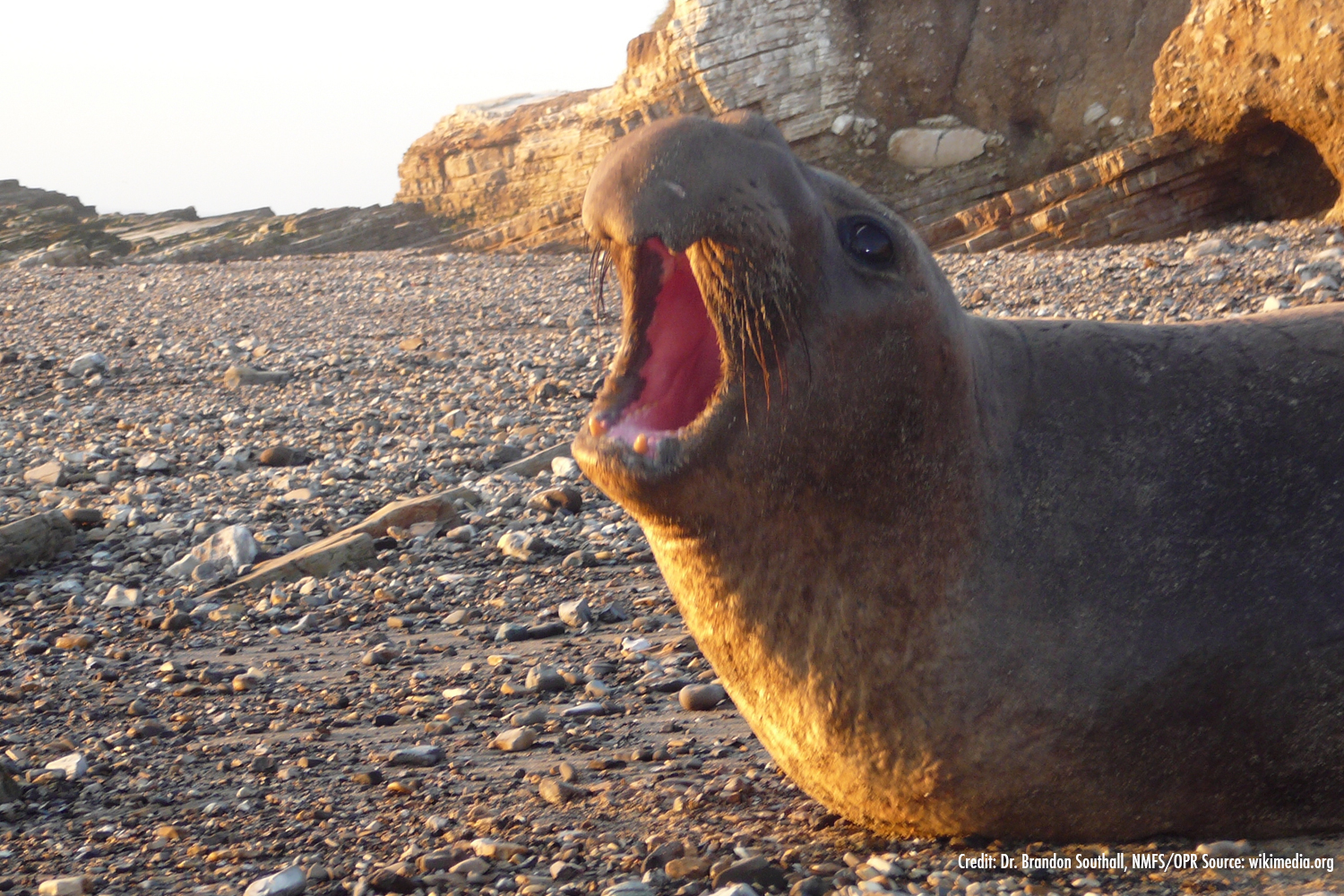
Seal Barking
Wild Elephant Seals gather even today to fight for who will be the dominant male of the group, in charge of a group of females and young seals. This one is barking—you can see the beginnings of his elephant-like nose growing already. -
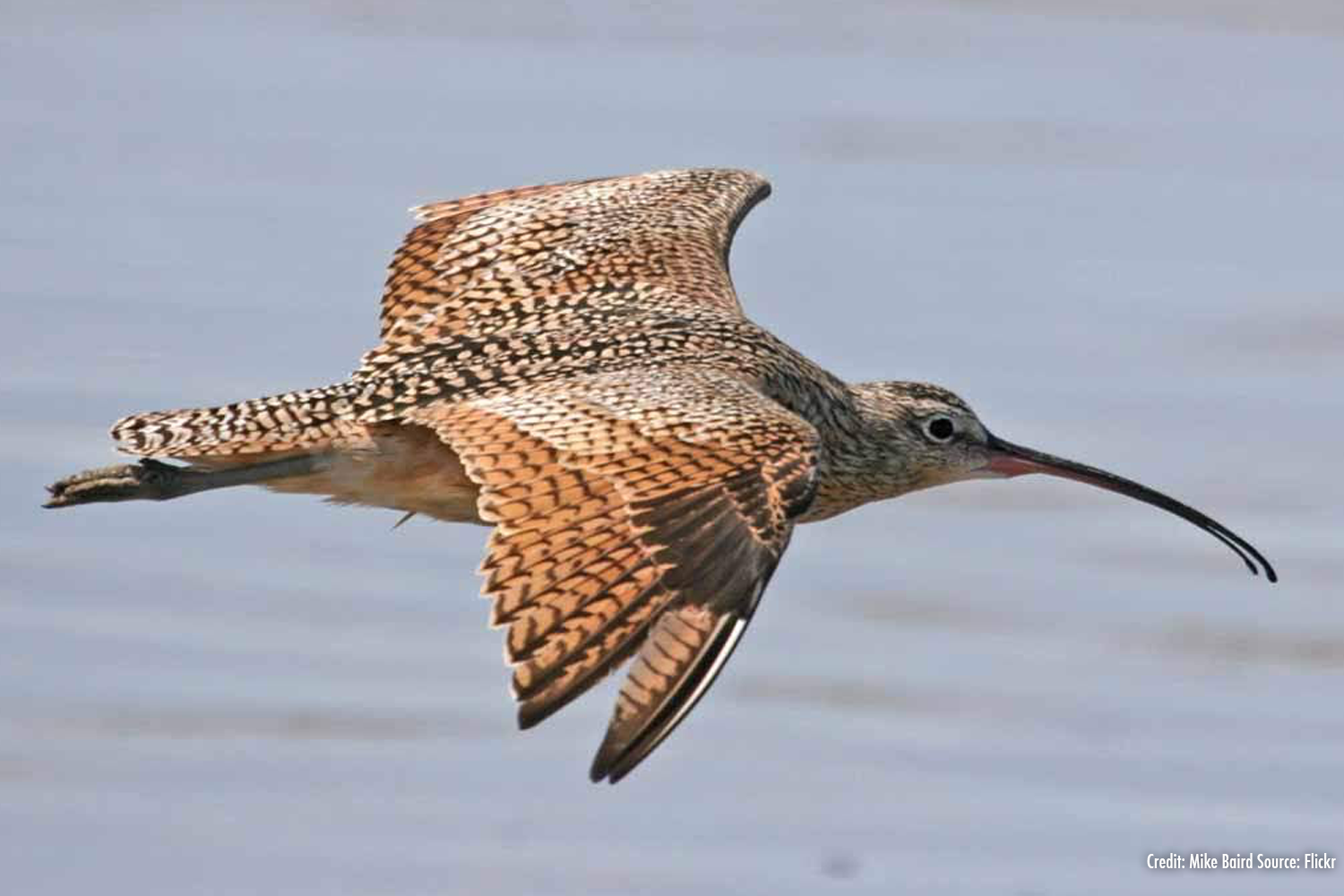
Flying Curlew
Curlews are large birds in the sandpiper family. They wade along the shore as well as flying. See the long, down-curved beak for reaching into the water? -
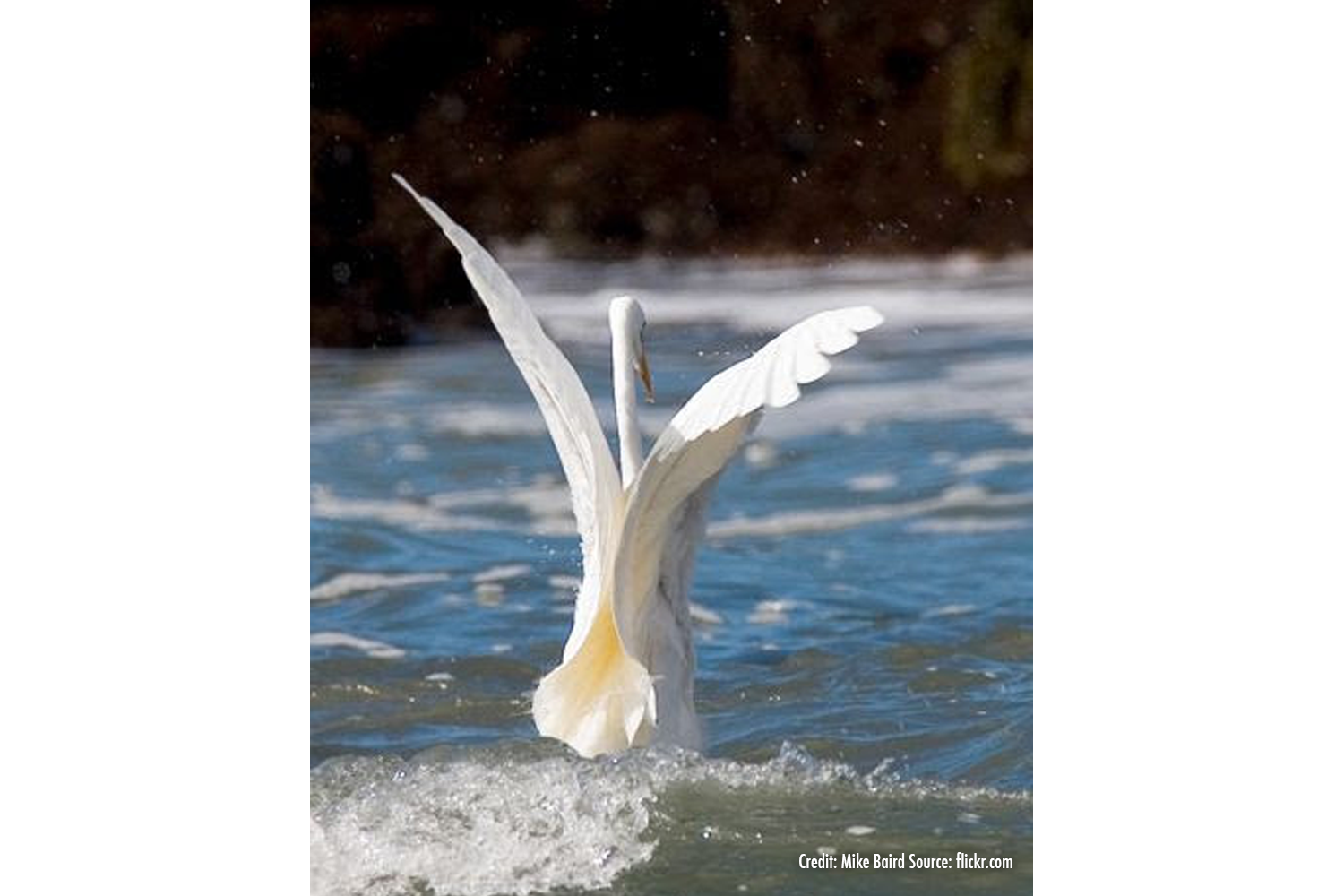
Great Egret Landing
Egrets are tall, wading birds that have long s-shaped necks and graceful curves to their wings. They are called snowy egrets because they are white. During mating, they show their fluffy feathers off. -
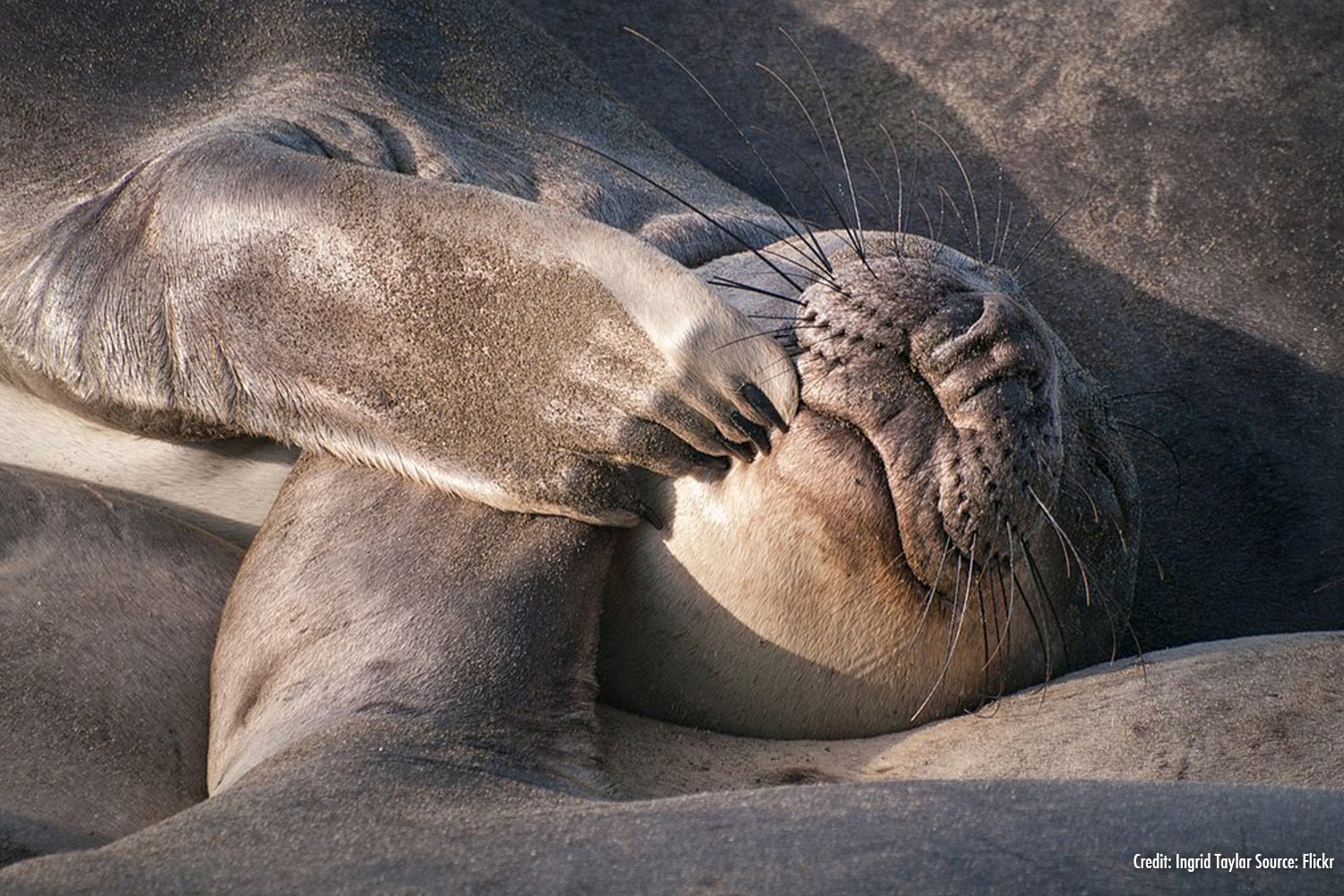
Seal Dream
Sea lions and seals have front and rear flippers. Seals have ear holes, but no ears. Sea lions have ear flippers. Can you tell which kind of marine mammal this is? -
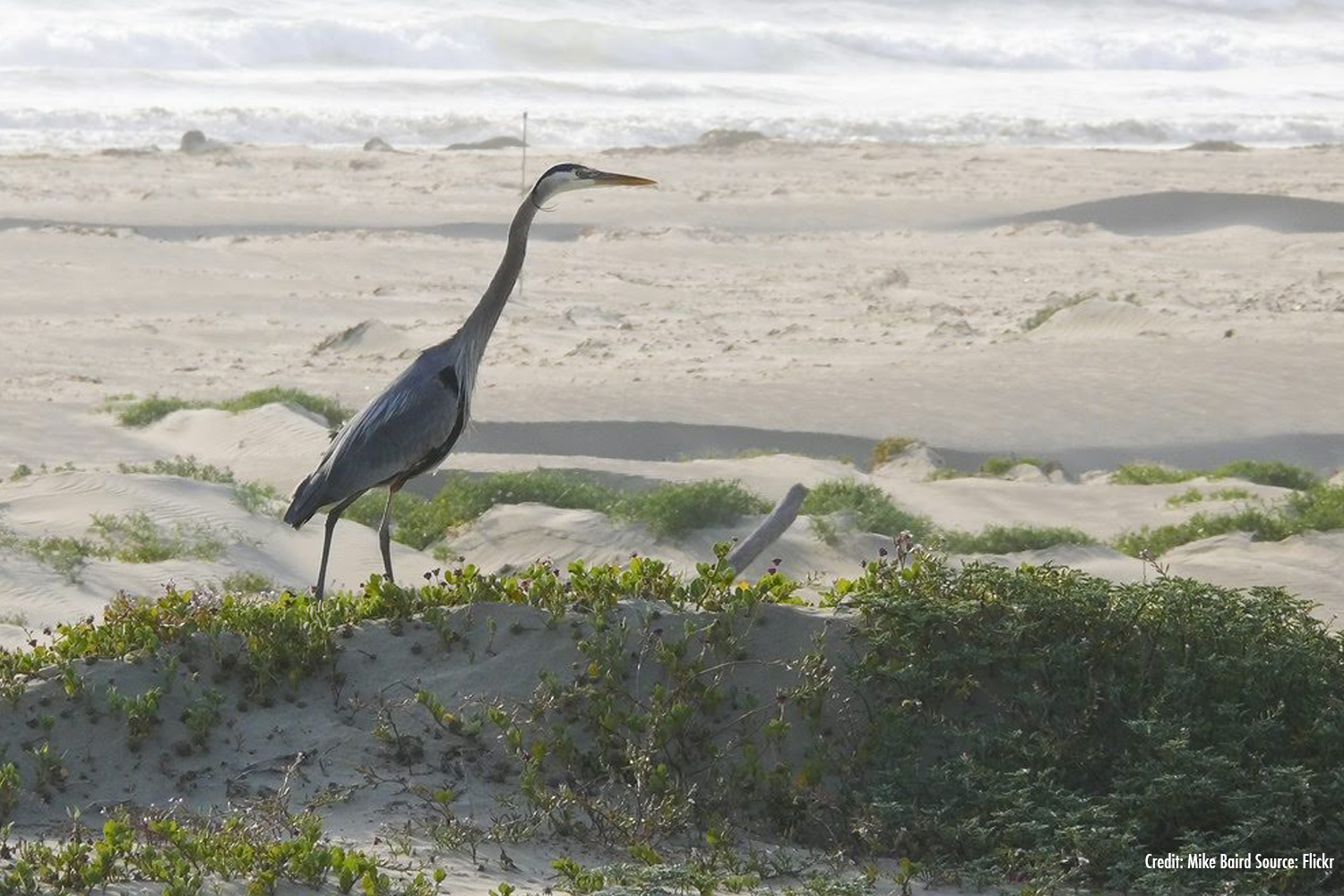
Great Blue Heron
Great Blue Herons stand over four feet tall, and have a wing span of six feet. They nest in old growth forests and by the shore, and hunt with their pointy beak. -
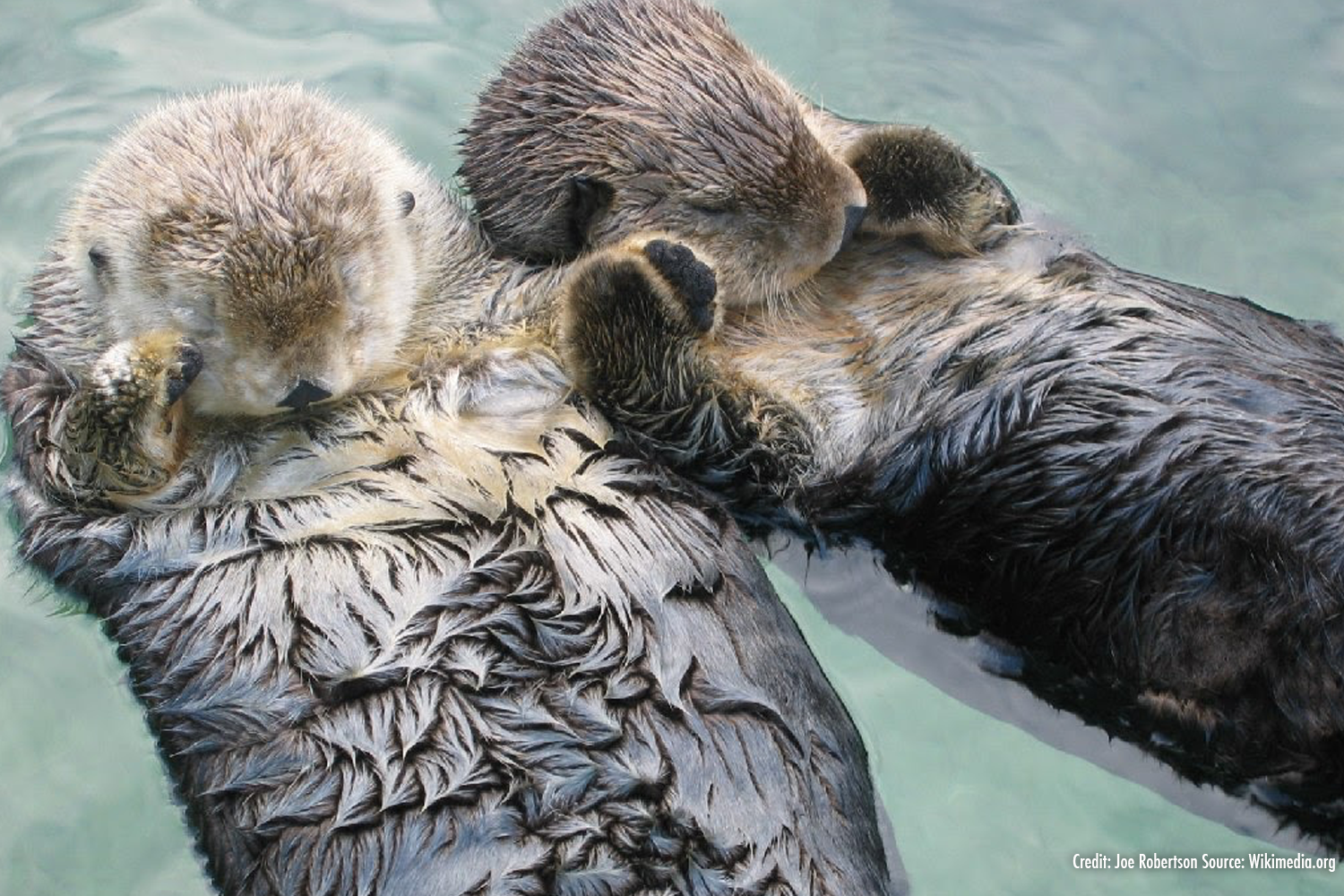
Sleeping Sea Otters
See the little ears on the sea otters? They can sleep on their backs in the ocean, and crack clams on their chest using a rock. If you see some at the coast, it’s really worth watching them!
